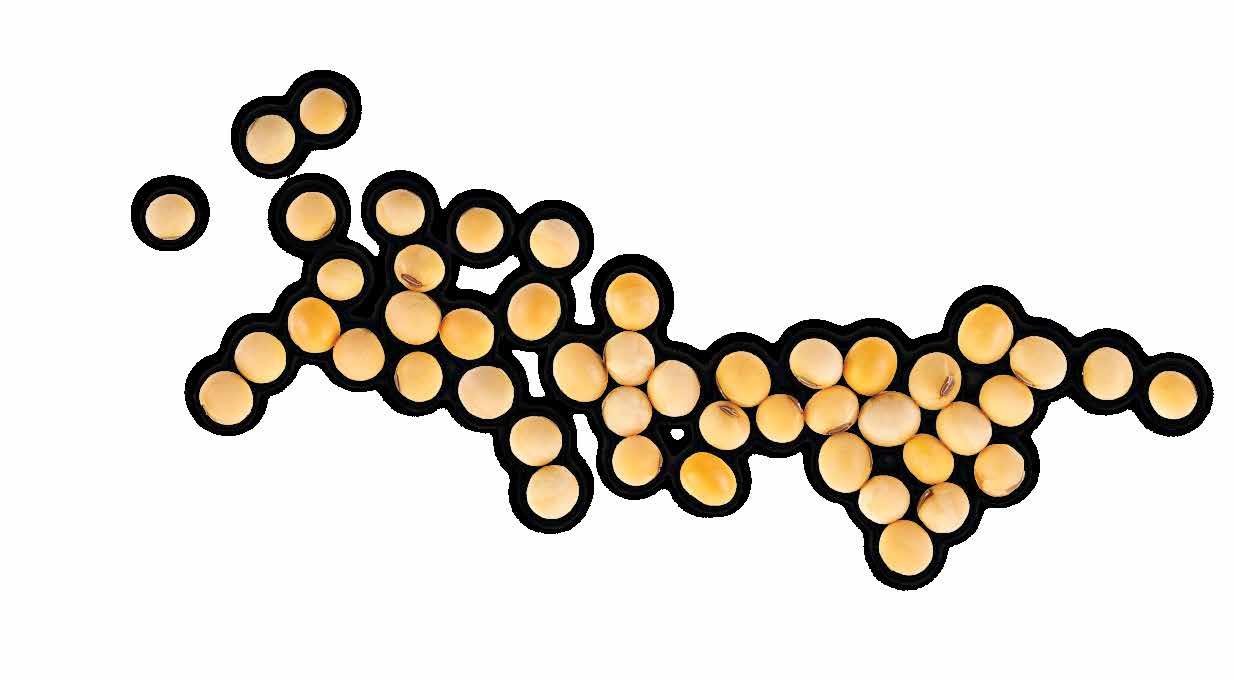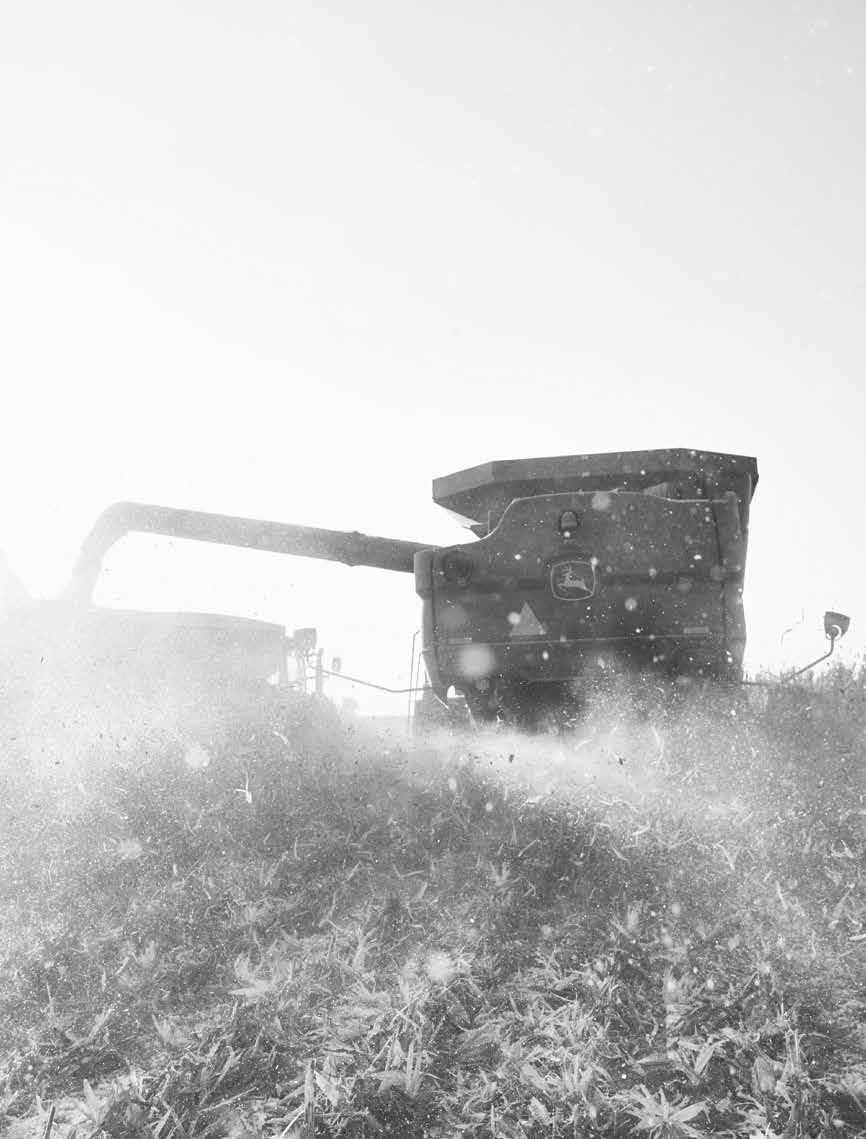Hoosier farmer travels around the world to promote agriculture




From promoting the profitability of using high-quality soybean meal in India to training animal producers on nutrition in Colombia, the soy checkoff is working behind the scenes to develop more market opportunities for U.S. soy. We’re looking inside the bean, beyond the bushel and around the world to keep preference for U.S. soy strong. And it’s helping make a valuable impact for soybean farmers like you.
See more ways the soy checkoff is maximizing profit opportunities for soybean farmers at unitedsoybean.org
Brought to you by the soy checkoff.
Sen. Mike Braun, a member of the U.S. Senate Ag Committee, asked for farmers’ opinions on what they want to see in the next farm bill during a roundtable discussion at Huntington University in August. 16
Chairman Jim Douglas, Flat Rock / D4
Vice Chairman Mike Koehne, Greensburg / D4
Secretary Kevin Cox, Brazil / D3
Treasurer C.J. Chalfant, Hartford City / D2
Committee Chairs
Matthew Chapman, Springport / D2 Mark Legan, Coatesville / D3 Denise Scarborough, LaCrosse / D1
Directors
Nancy Cline, Kirklin / D1
Joseph Stoller, Bremen / D1
Kevin Kelley, Brookston / D1
Allen Buchanan, Fowler / D1
Dylan Christopher, Brookston / D1
Steve Phares, Albion / D2
Elaine Gillis, Dunkirk / D2
Carey McKibben, LaGrange / D2
Brian Warpup, Warren / D2
Andrew Miller, Oaktown / D3
Derika Lynam-Spaetti, Richland / D3
Gary McDaniel, Boonville / D3
Craig Williams, Oaktown / D3
Roger Bommer, Brookville / D4
Keevin Lemenager, Monrovia / D4
Kevin Burbrink, Seymour / D4
Anngie Steinbarger, Edinburgh / D4
Korean farm journalist Ann, Hee Kyoung writes about what she saw while touring Indiana farms, Purdue and agribusinesses during a Korean Soy Oil Masters tour provided by USSEC and ISA.
Vice President Chris Cherry, New Palestine / D6
When government regulates agriculture, farmers can resist or abide by the new rules. Some, though, turn compliance into leadership with their own best farm practices, which some neighbors emulate.
The Indiana Corn Marketing Council, the state’s corn checkoff program, celebrated its 15th anniversary with a farm industry leaders, lawmakers and corn growers on Aug. 23 in Indianapolis.
60
About the cover: Frankfort, Ind., farmer Mike Beard has belonged to many commodity groups and continues to work to make Hoosier farms more profitable. See the story on page 20..
Secretary Sarah Delbecq, Auburn / D3
Staff
Treasurer Mike Flock, Ramsey / D9
Directors
Tom Murphy, Chesterton / D1 Christian Rosen, Urbana / D2 Mike Beard, Frankfort / D4 Tyler Everett, Lebanon / D7 Mike Nichols, Rockport / D8
For advertising information in the Indiana Corn & Soybean Post®, contact Dave Blower Jr. at 317-3473620 or dblower@indianasoybean. com. Comments and statewide news articles should be sent to the above address. Advertising space reservations must be made by the first day of the month preceding publication. In consideration of the acceptance of the advertisement, the agency and the advertiser must, in respect of the contents of the advertisement, indemnify and save the publisher harmless against any expense arising from claims or actions against the publisher because of the publication of the content of the advertisement.
facebook.com/indianaSoybeanAlliance

World’s eyes remain fixed on the U.S. grain market

Imagine standing at an open door in an airplane flying at 12,000 feet above the ground. The feeling of butterflies in your stomach is balanced by the lifelong dream to experience flying – or at least falling with style. You’re in the plane with veteran skydivers; your parachute and equipment has been checked and double-checked, and as much as possible, you’re comfortable in this environment.
Still, you wouldn’t be human if you weren’t a little scared in this situation.
But, you understand, that if your dreams don’t scare you a little, you’re not dreaming big enough.
This situation is a little extreme, but we are risk takers. The uneasiness of managing risks is nothing new for farmers.
What to plant? When do we plant? What crop protection do we use? When do we sell? What is our plan for equipment failure? Every day we make decisions that impact our bottom line, and every day we face risks that could affect our future. Through experience and trust in this situation, these are risks that we are confident in managing.
But there are other risks. And we need to take part in managing those, too.
The debate for what gets included in the 2023 Farm Bill is underway. As the chair of the Indiana Soybean Alliance’s Membership and Policy Committee (M&P), I’ve had the privilege to participate in some of those discussions.
I hosted a Shop Talk event for about 30 farmers and ag industry stakeholders for Sen. Todd Young on our farm in Henry County in early August. I also attended a Shop Talk for Rep. Jim Baird, who is on the House Ag Committee, at the farm of M&P member Mark Legan in Putnam County earlier this month.
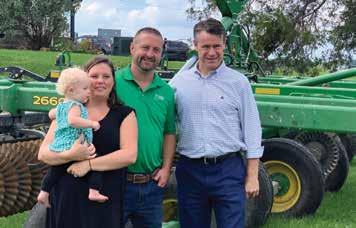
What I’ve come away with from these meetings is that farmers too often let their conservative ideas and beliefs get in the way of proactively negotiating with government officials. I have been in meetings where I have watched
farmers passively kick at the ground and ask for exactly what they think they need financially for a specific program.
That’s not how other industries approach their elected officials on Capitol Hill. They go in aggressively asking for two or three times what they need – figuring that they can settle for less, but still more than what they need. Other industries campaign Congress as if the squeaky wheel gets the grease. Those of us in agriculture too often live with a squeaky wheel.
As the 2023 Farm Bill debate begins to take shape, there are programs that have helped soybean growers through difficult times. There are other programs that help expand our markets. We need to actively tell our Members of Congress to keep and grow these programs.
Maintaining or improving crop insurance should be on our wish list, as should increased funding for Title I programs such as Agriculture Risk Coverage (ARC) and Price Loss Coverage (PLC). USDA efforts to move more exports, like the Market Development Program and the
Foreign Market Development program, are important, too. We’d also like to have conservation and carbon sequestration programs that offer incentives but don’t require strict regulations on every acre – because we know you can’t treat every acre on your farm the same way.
Finally, our voices are strongest when there are many. Reach out to me for ways to get involved. Send an email to Mrchapma2004@yahoo.com
Remember that without big dreams there are no big accomplishments.
ICMC has worked to increase livestock and meat exports by working with our national and international partners, including the US Meat Export Federation. The projected market value of red meat exports to Indiana corn over the next 10 years is $1.25 Billion*.
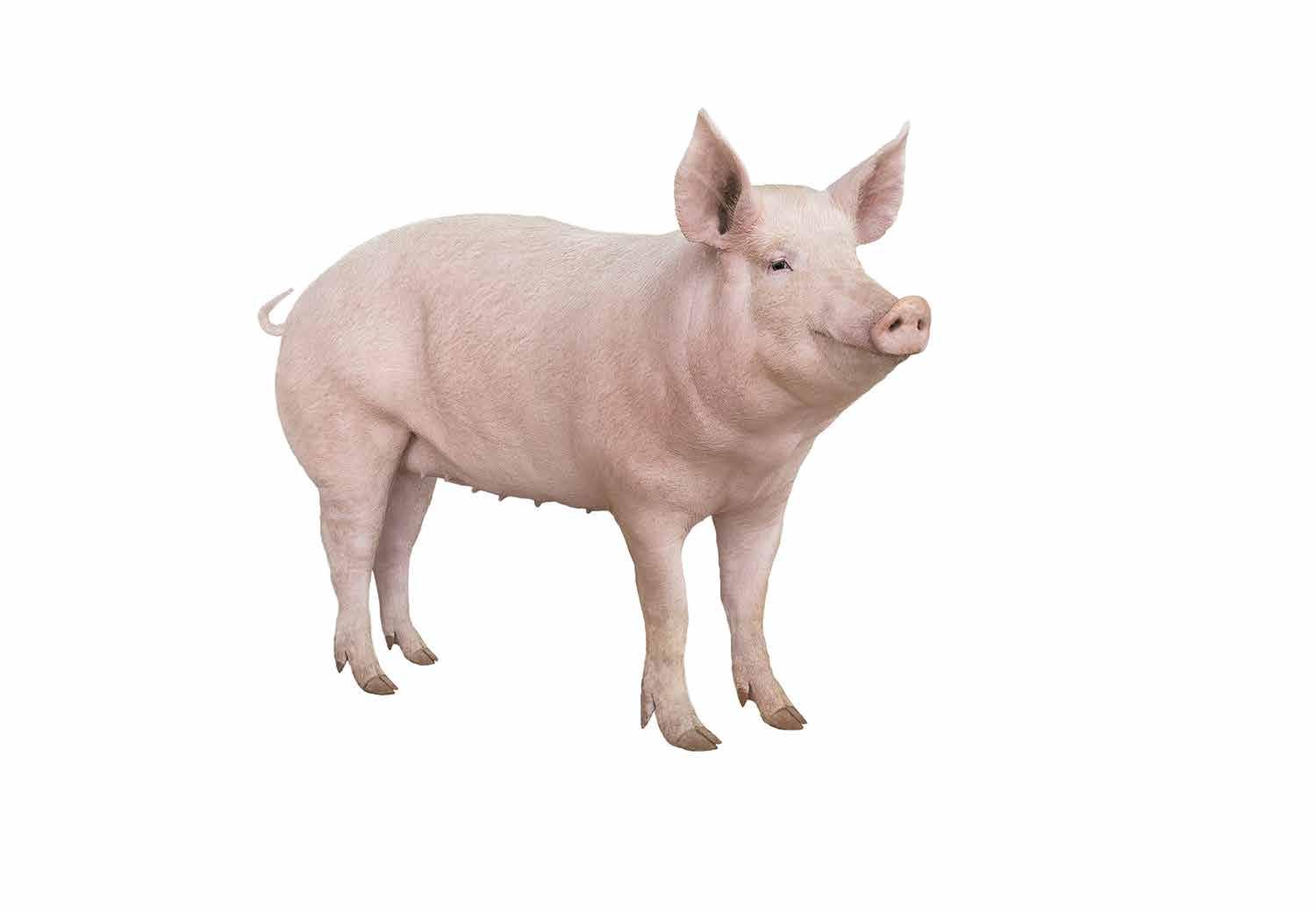


See how protein markets are driving corn value at incorn.org.
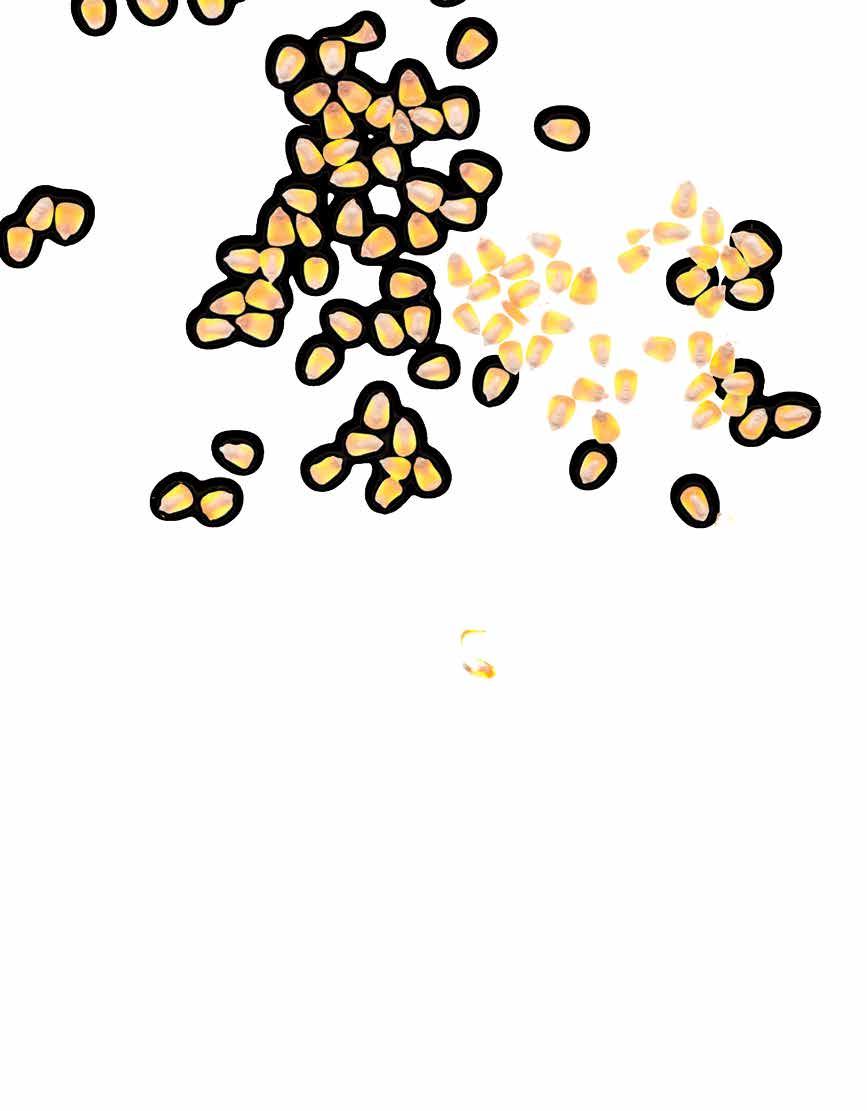

Most of us are familiar with the saying that many hands make the task brief. As farmers, we know that to be true. But it’s not only true on the farm; it’s also true in doing the policy work that allows Hoosier farmers the freedom to make their own decisions on their farms. It’s true in encouraging policies that make it easier for us to export our produce all over the world – increasing their value. It’s also true in creating new products made from our versatile crops.
We’re blessed in Indiana with many farmers willing to take the time to do this off-farm work. Furthermore, we are starting to see some of these farmers gain leadership positions in national farm organizations.
This summer, Anderson, Ind., farmer Joshua Miller was elected chairman of the U.S. Grains Council (USGC), which works to promote corn exports around the world. Miller resigned his board position on the Indiana Corn Marketing Council (ICMC) so he could focus on his USGC efforts. Miller’s experience and skills are well-suited for this work, and all Indiana farmers will benefit from his USGC leadership.
J.R. Roesner, already an ICMC board member and a farmer from Ferdinand, Ind., became the third Hoosier to be elected to the National Corn Growers Association’s (NCGA) Corn Board this summer. J.R. volunteered a few years ago to serve on the NCGA’s Ethanol Action Team, eventually becoming the committee’s chair. J.R.’s leadership in the NCGA will be good for Hoosier farmers because he can help direct their efforts to policies that matter to us.
J.R.’s policy work is expanding. He was also elected to
represent District 8 in southwestern Indiana on the ICGA board. He replaces Mike Nichols, who has served on ICGA for the past nine years.
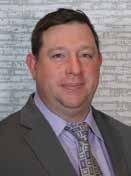
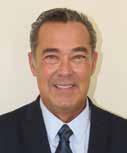
Also new to the ICGA board is Mill Creek, Ind., farmer Joe Tuholski. He is not new to service for Indiana farmers, though. Tuholski was on the Indiana Soybean Alliance board for nine years and was the checkoff’s board chair for one year. He will represent District 2 in northwestern Indiana. Earlier this year, after years of service, Christian Rosen decided not to seek re-election.

I was honored to be elected to a second term on the ICGA board, representing District 5 in central Indiana, this summer.
Serving on one of the policy or checkoff boards is rewarding work. You learn that you have the same worries, concerns, goals and joys as thousands of other farmers from around the state. I feel more connected to those who do our work. It’s been among the most satisfying work of my life.
Anyone who is considering joining one of these boards should seriously look into it.
However, I don’t want you to think that sitting on a board is the only way to get involved. ICGA and our checkoff boards are always looking for advice on our programs and efforts. We’re looking for farmers who might be willing to learn more about export opportunities and policy. We’re looking for growers who want to encourage the production and sales of ethanol.
I believe you’ll find that the more you give your time, the more rewards you will see.
IOM Grain has been your leading choice for high-quality, high-yield, food-grade soybeans for over 20 years. We’re continuing to grow that leadership through our partnership with GDM, a global soybean genetics powerhouse. In fact, over 40% of the world’s planted soybean acres are derived from GDM genetics.
Now we’re excited to offer GDM’s flagship brand, DONMARIO Seeds, an independent seed brand dedicated to transforming soybean genetics that bring higher yields to farmers’ operations. Exclusive to the DONMARIO brand, DONMARIO soybeans are not offered in any other brand or bag and provide farmers with exclusive varieties and trait options.
If you’re all about growing superior-quality, high-yielding non-GMO and GMO soybeans and earning the highest premiums, contact IOM Grain today. Call 260-726-6224 or visit iomgrain.com.

Because Quality Matters. 20 years and still growing.
974 E 100 N, Portland, IN 47371 | ©2022 IOM Grain. All rights reserved.
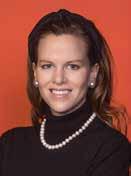 BY BLAIR SHIPP
ASA State Policy Communications Coordinator
BY BLAIR SHIPP
ASA State Policy Communications Coordinator

As the 2023 harvest season rapidly approaches, ASA and soy advocates continue to work with Congress and the Administration to ensure that soy and agricultural policies are at the top of everyone’s legislative agenda.
President Biden signed the Inflation Reduction Act of 2022 (H.R. 5376) into law Aug. 16, following its passage through the U.S. House Representatives with a vote of 220-207. This reconciliation package includes a subset of nearly $38 billion funding for agricultural conservation, credit, renewable energy and forestry through FY2031.
Throughout the over yearlong development of this partisan package, ASA remained neutral on the overall package but voiced support for specific provisions (such as biofuels investments, which were included) and voiced opposition to specific proposals (such as changes to stepped up basis and other farm tax provisions, which were not included).
The package includes $19.5 billion for agricultural conservation. It adds more than $18 billion in additional funding for existing farm bill conservation programs, including the Environmental Quality Incentives Program ($8.45 billion), Regional Conservation Partnership Program ($4.95 billion), Conservation Stewardship Program ($3.25 billion), and Agricultural Conservation Easement Program ($1.40 billion).
The Freight Rail Shipping Fair Market Act (FRSFMA) was introduced to the U.S. House of Representative on Aug. 2. This legislation, while in response to rail service delivery issues over the past six months, would bring the Surface Transportation Bord back into a current authorization and
provide the board with adequate funding to operate.
The current Surface Transportation Board authorization expired two years ago.
Important provisions in the bill supported by ASA and other members of the Agricultural Transportation Working Group include: an increase in the authorized appropriations levels to $255.75 million during five years for the STB workload; creating guardrails that would result in service delivery standards and remedies being included in rail contracts without dictating specific terms; providing a level of fairness currently lacking in the freight rail system by allowing shippers – not just rail carriers – to charge demurrage to ensure both sides of the transaction are incentivized to perform; and updating the definition of common carrier obligation to establish minimum rail service standards.
These updates are desperately needed to enable industries like agriculture to receive reliable and dependable rail service to help drive the economy forward.
House lawmakers are spending the next two months negotiating across the aisle in an effort to reach a bipartisan agreement on the draft legislation. ASA is communicating its priorities regarding this legislation to soy state members of Congress who sit on the Transportation & Infrastructure Committee. The committee is tentatively scheduled to mark up this legislation in late September.
In a surprise vote July 28, the U.S. Senate passed the Water Resources Development Act with a bipartisan vote of 93-1.
The legislation contains a provision that would permanently adjust the cost-share ratio for Inland Waterways Trust Fund (IWTF) projects from the current 65 percent general revenues and 35 percent IWTF to 75 percent general revenues and 25 percent.
These updates are desperately needed to enable industries like agriculture to receive reliable and dependable rail service to help drive the economy forward.
This cost-share ratio change was ASA’s top priority in the legislation.
In June, the House of Representatives passed its version of WRDA by a vote of 384-37. This bill did not include the same adjustment to the cost-share allocations for IWTF projects. The House and Senate will now begin conference negotiations to reconcile the differences between the two bills.
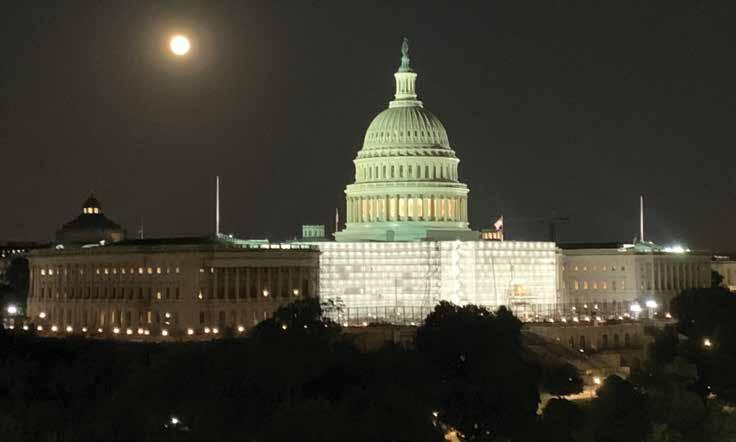

ASA will continue to support the Senate provision to adjust the cost-share allocation, as it will make significant progress in addressing the current backlog of construction projects along the inland waterways system. Completing this backlog of construction to resolve bottlenecks and slow-downs along the system will help alleviate supply chain issues. The strength of America’s farm economy relies on the efficiency of its inland waterways system.
ASA leaders and staff gathered in Boone, Iowa, earlier this month for the annual Farm Progress Show. During the show ASA President Brad Doyle, a farmer from Arkansas; ASA Vice President Daryl Cates, a farmer from Illinois, and ASA CEO Steve Censky met with industry partners and fielded media interviews on top policy issues.
Doyle and Cates sat down with House Ag Committee Ranking Member Glenn “GT” Thompson to discuss ASA’s Farm Bill 2023 priorities and more. ASA leaders also had the opportunity to chat with USDA Secretary Tom Vilsack and Reps. Mariannette Miller-Meeks and Vicky Hartzler.
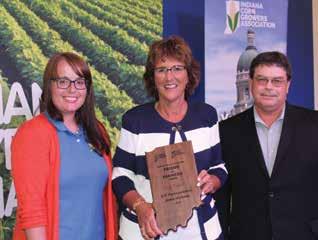
U.S. Rep. Jackie Walorski (R-2nd Dist.) and two of her staff, District Director Zach Potts and Communications Director Emma Thomson, died in a two-car accident in the afternoon on Aug. 3 near Nappanee, Ind.
The Indiana Soybean Alliance Membership and Policy Committee (M&P), the Indiana Soybean Alliance (ISA), the Indiana Corn Growers Association (ICGA) and the Indiana Corn Marketing Council (ICMC) worked closely with Rep. Walorski and her staff on many issues and is saddened by their deaths.
“We are simply heartbroken to hear about Rep. Walorski’s sudden and tragic passing and that of her staff, District Director Zach Potts and Communications Director Emma Thomson. We send our deepest condolences to Rep. Walorski’s husband, Dean, the families of Mr. Potts and Ms. Thomson, and her staff,” said Courtney Kingery, CEO of the Indiana Soybean Alliance, the Indiana Corn Marketing Council and the Indiana Corn Growers Association.
“This is a terrible loss and shock for Indiana. We were together today at the grand opening of Louis Dreyfus Company’s new soy liquid lecithin plant in Claypool, Ind. – a perfect example of how she was a champion for the farmers and the agricultural businesses in her district. Rep. Walorski advocated for Indiana farmers frequently, and in 2019 we presented her with
our Friend of Farmer award. She will be remembered as a dedicated leader who helped Indiana’s farmers achieve the highest value for their crops.
Rep. Walorski, Mr. Potts and Ms. Thomson will be deeply missed. Our thoughts and prayers are with all involved in the accident today.”

ICGA and M&P presented its Friend of Farmer award to Walorski in 2019. ICGA and ISA M&P created the Friend of Farmer award to honor elected officials each year at any level of government whose service to Indiana farmers has gone above and beyond in advancing the mission of their organizations. Walorski was honored for advocating for Hoosier farmers as the trade war with China began to escalate.
“Farmers are at the heart of the American economy, and here in Indiana they play a vital role in making our communities strong, keeping families healthy, and helping Hoosiers succeed,” Walorski said after receiving the award. “I’m honored to receive the Friend of Farmers Award and grateful to work alongside the ICGA and ISA to make sure our farmers are thriving. I look forward to continuing our work together to keep Hoosier agriculture going strong.”
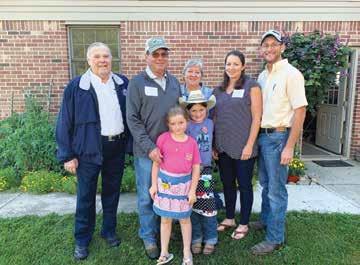
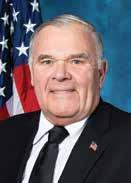
Agriculture remains intricately connected to technology and innovation, especially as we look to our farmers and ranchers to meet increasing demand during times of crippling unpredictability. As geopolitical tensions abroad disrupt supply chains and heighten the threat of food insecurity both at home and abroad, policymakers must ensure access to agricultural technologies is readily available and not excessively regulated.
Regardless of their socioeconomic status, Americans should not be threatened by food insecurity, especially those Americans living in such an agriculturally rich and fertile state. Unfortunately, there are more than 726,000 Hoosiers facing hunger with 225,750 of them being children. Further, of the households utilizing the Supplemental Nutrition Assistance Program (SNAP), 46.3 percent of these households include children. These should not be the statistics associated with the United States nor Indiana.
In the coming months, the House Agriculture Committee will finalize the 2023 Farm Bill, which directs agricultural policy for the next five years. In addition to domestic programs like Supplemental Nutrition Assistance Program (SNAP), the next farm bill must prioritize the research, funding and implementation of the biotechnologies needed to help Americans meet nutrition standards, address food insecurity and eliminate hunger.
By using well understood techniques like CRISPRCAS9 to enhance plants and animal genetics alongside industrial biotech practices, farmers will be able to go on the offensive and better operate in the wake of many unpredictable variables, albeit weather, input costs or demand. CRISPR-CAS9 edits genes by precisely cutting DNA and then letting the natural DNA repair processes to take over. CRISPR/Cas9 has revolutionized biomedical research and may soon enable medical breakthroughs in a way few biological innovations have before.
Advanced research and scientific techniques will diminish reliance on sparse and sporadically regulated
pesticides, increase crop yields without the relying on fertilizer manufacturers, reduce the threat associated with of droughts or flooding, and bring the promise of price stabilization, especially during a time of record inflation. All of these mentioned results will greatly benefit Americans as they gather around a bountiful and affordable spread at the kitchen table.
Biotechnology represents the future of agriculture. As research and development leads to the subsequent production and distribution of these technologies, the agricultural sector will be poised to readily assimilate these best practices and allow downstream consumers to reap the benefits.
I look forward to working with my colleagues on the Agriculture Committee to support American farmers and ranchers and address the many other challenges that contribute to food insecurity and malnutrition.
Rep. Jim Baird represents the 4th Congressional District of Indiana in the U.S. House of Representatives. He serves on the House Agriculture Committee and is currently the Ranking Member on the Subcommittee on Biotechnology, Horticulture and Research. Rep. Baird is a farmer, PhD animal scientist, and previously served as a County Commissioner and member of the Indiana General Assembly.
Recent supply chain issues have impacted every industry in America. Anyone involved in Indiana agriculture can certainly attest to that.
These challenges have led to a shortage of combines, tractors and planters. They have limited access to GPS tools necessary to collect yield data. And they have created anxiety at the market, where farmers face uncertain prices and increased gas and energy costs.
There is good news though.
Legislation I authored to address this crisis – and prevent future ones – was signed into law last month.
The legislation went by many titles — the Endless Frontier Act, the U.S. Innovation and Competition Act, and finally the CHIPS and Science Act.
Whatever its name, enactment of this legislation is not only a win for Indiana agriculture, but also a bold investment in America’s national security.
I wrote the original version of this bill recognizing that we are in an ongoing global power competition with China.
In the last year, Hoosiers saw just how vulnerable — militarily and economically — America is to an increasingly technologically superior China.
America’s supply chain ground to a halt because of a shortage of semiconductors, leaving plants like General Motors in Fort Wayne sitting idle and the floors of farm equipment dealerships empty. These tiny chips bring life to our cellphones, cars, and appliances — almost anything with a motor or a plug, including our military platforms and increasingly farm equipment.
America makes only 12 percent of the global supply of semiconductors, and China is investing heavily in semiconductor production. China is now on pace to control roughly 20 percent of the market by 2024. Ninety percent of the chips in our military hardware are currently made overseas.
This is all part of Beijing’s bet to beat America. But the CHIPS and Science Act helps America counter that bet.
This new law provides $50 billion to jumpstart semiconductor production here in the United States. A thriving domestic chip industry will prevent future supply chain stoppages, protect Hoosier famers, and safeguard America’s military readiness.
And it will benefit the Heartland economy. A corridor of the semiconductor industry will run through Indiana. Thanks to this law, SkyWater Technology is moving forward with plans to partner with Purdue to build a $1.8 billion facility in West Lafayette that will manufacture semiconductor chips and create an estimated 750 Hoosier jobs.
The truth is our country faces a defense deficit, in large part because the Chinese government is heavily subsidizing industries and the development of mission critical technologies that the Chinese Communist Party hopes will give it an upper hand, both militarily and economically. It is simply not a level playing field. Given this reality, we face two choices: do nothing and cede the future, or make smart investments in the American people and our national security to win the future.
Supply chain disruptions have been difficult for Indiana agriculture. But because of the CHIPS and Science Act, I’m confident that we are addressing these challenges and building a more prosperous and secure tomorrow for all Americans.
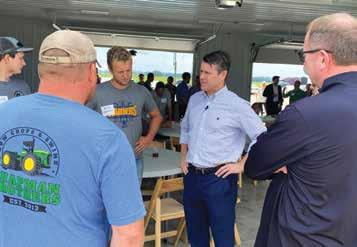
Sen. Todd Young represents the State of Indiana. He currently serves on the U.S. Senate Committees on Finance; Foreign Relations; Commerce, Science and Transportation; and Small Business and Entrepreneurship. Previously, in the House, he served on the House Armed Services Committee, the House Budget Committee, and most recently the House Ways and Means Committee.
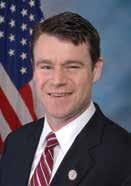
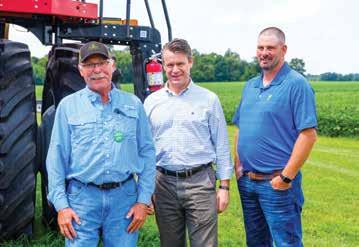 BY STEVE HOWELL, Senior Director of Industry Affairs, ICGA, ICMC and ISA
BY STEVE HOWELL, Senior Director of Industry Affairs, ICGA, ICMC and ISA
During August of each year, the Indiana Soybean Alli ance’s Membership and Policy Committee (M&P) and the Indiana Corn Growers Association (ICGA) host a series of Shop Talks for Indiana’s congressional delegation across the state.
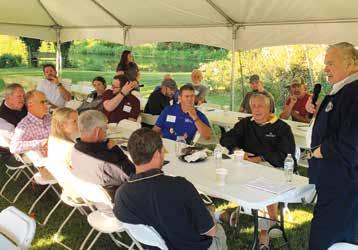
August is a perfect time to have these meetings as Con gress is on recess during the month. Just to be clear, “recess” simply means Congress is not in session, and Members of Congress use this time to get back to their districts and meet with constituents. Although Congress is on recess, much work is done back home in the state.
M&P and ICGA have hosted Shop Talks for several years. The term “Shop Talk” is an important description of the meet ings. We want to offer meetings for farmers where there is more emphasis on farmers talking with representatives and senators, as opposed to office holders just speaking to farm ers. We typically host these meetings in a farm shop where farmers are more relaxed.
Shop Talks also give us a chance to showcase modern, commercial-scale agriculture to Members of Congress. These on-farm meetings are a great opportunity to show the scale in which a modern farm operates, the volumes produced, and the technology needed to efficiently produce a crop. Having this up-close and personal view of modern agriculture gives elected officials an important perspective as they debate issues impacting agriculture.
Topping the list of issues discussed was the reauthorization
of the farm bill, which is set to expire in 2023. Central to this discussion was the need to protect crop insurance, allocating more dollars within the farm bill to support Title I programs such as Agriculture Risk Coverage (ARC) and Price Loss Cov erage (PLC), and increasing funding for the Market Develop ment Program and the Foreign Market Development program.
Biofuels policy was also covered at the Shop Talks. One of ICGA’s priorities is pushing for higher blends of ethanol in gasoline. Year-round sales of E15 gasoline and passage of the Next Generation Fuels Act would lead to higher blends of ethanol and increased corn grind. The blenders tax credit for biodiesel is a priority of M&P, as well as seeking opportunities for soybean oil in the producers of Sustainable Aviation Fuel.
Another priority issue for both M&P and ICGA is trade policy. Indiana farmers expressed concern about the lack of aggres sively seeking new trade opportunities for agriculture and the need to enforce existing trade agreements. There has been growing concern that requirements in the recently passed USMCA are not being followed by Mexico – primarily biotech crops acceptance. Representatives and senators, alike, com mitted to investigating the need for stronger enforcement of trade agreements.
Additionally, supply chain concerns, inflation and the global unrest caused by the war in Ukraine, were discussed.
M&P and ICGA would like the thank the sponsors of this year’s Shop Talk series: Corteva, First Farmers Bank and Trust, Asgrow, Farm Credit MidAmerica and Pioneer.
you

Whether shipping by river, road or rail, the soy checkoff is committed to ensuring America’s infrastructure is a significant advantage for U.S. soybean farmers. We’re looking inside the bean, beyond the bushel and around the world to keep preference for U.S. soy strong. And it’s helping make a valuable impact for soybean farmers like you.
See more ways the soy checkoff is maximizing profit opportunities for soybean farmers at unitedsoybean.org
The Indiana Corn Growers Association (ICGA) and the Indiana Soybean Alliance Membership & Policy Committee (M&P) sponsored an online farm bill roundtable for Sen. Mike Braun (R-Ind.) on Aug. 24 on the campus of Huntington University in Huntington, Ind.
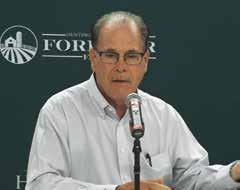
Sen. Braun is a member of the U.S. Senate Ag Committee. He said he is seeking farmers’ views on what they want to see in the next farm bill because few in Congress understand farm issues.
“First, there aren’t many on the ag committee who are associated with agriculture,” Braun explained. “Sen. Jon Tester, a Democrat from Montana, still puts out a crop. Most on the ag committee are getting briefed by their staff, who are 20 or 30 years old with no farm experience. So, you have to be careful.”
The roundtable panel included M&P board member Brian Warpup, Indiana Farm Bureau President Randy Kron, Williamson Crop Insurance owner Jason Williamson and State Rep. Dave Heine (R-Fort Wayne). WOWO Radio Farm Director Rob Winters was the emcee.
Several farmers told Braun and the roundtable panel that they want some programs from the 2018 Farm Bill, such as crop insurance, the Agricultural Risk Coverage (ARC) and Price Loss Coverage (PLC), carried over into the next farm bill. Braun indicated that he does not anticipate the present crop insurance structure to change in the 2023 Farm Bill. Williamson, who is also the Treasurer of the Crop Insurance Professionals Association, admitted he was relieved to hear that news. He added that there are always fears that good programs will get changed.
“We’re just thrilled with how crop insurance is working right now,” Williamson said. “It’s a public-private partnership. It has worked very well for the private sector to deliver to the farmers we serve. More than 90 percent of the row crops in America today are covered by some form of federal crop insurance, and we’re doing that with what in Title 11 is less than 8 percent of the farm bill funding.”
Braun said there is some concern that some federal lawmakers may try to tie specific conservation requirements to crop insurance or other farm bill programs.
Warpup, a farmer from Warren, Ind., said he gets
concerned when federal lawmakers begin to negotiate for specific items. “The detachment of Washington to the common voting person or farmer, I agree can be a problem,” Warpup said. “We want crop insurance, but they attach so many other aspects to that, whether it is conservation tillage or whatever, and it becomes a problem.
“What they don’t realize is that the same practice just doesn’t work with every acre. One size does not always fit every farm, every field or every location. Even on our own farm, we don’t farm every acre the same way. So, there needs to be some flexibility in this farm bill not to tell everybody what to do. I think we need to paint the farm bill with broad strokes. It’s discouraging, anyway, to have someone in Washington, who isn’t in agriculture, telling us how we should farm our ground.”
Kron said crop insurance has become more important as input costs continue to rise. “We planted the most expensive crop that I ever have in 38 years of farming,” he said. “To have a safety net is critical.”
Heine said that Indiana’s General Assembly has spent more than $350 million in the last four years to expand broadband internet service into rural areas around the state. He credited Indiana Farm Bureau in collecting statistics and developing maps of underserved areas across Indiana. Heine added that the federal government is also spending money to help with this effort.
Winters said more than $3 billion in high tech farm equipment hasn’t been purchased in recent years due to a lack of broadband internet access. “Until you get high-speed, fiber-optic internet service into every nook and cranny in this state, you’re not going to get people to move to rural areas, let alone start a business in those areas,” Braun said. “We’re going to get there, though.”
Kron said better internet access will help children’s education and improve the quality of life for people who live in rural areas.
Winters said farmers have told him that they are concerned about long-standing crop protection tools, such as atrazine,
Williamson Crop Insurance owner Jason Williamson, who is also the Treasurer of the Crop Insurance Professionals Association, admitted he was relieved to hear that Congress isn’t planning many changes to the crop
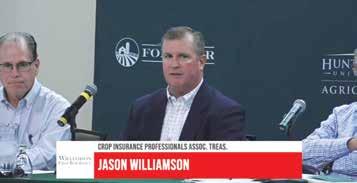
program.
being eliminated by federal regulations through the U.S. Environmental Protection Agency (EPA). He said atrazine is among the most-tested field chemicals, and there is no evidence that it harms the environment. Still, the EPA is focusing on regulating the herbicide.
“You can farm without it, but farmers like atrazine,” Warpup said. “It is critical in grass control in corn fields. In this environment that we’re in right now, we are not over-applying anything because it costs so much money. We want to be as efficient as we possibly can when applying crop protection. We hear claims that farmers over-apply everything, whether it is atrazine or something else. Well, I don’t do it. I don’t know any farmers who do it. It just costs too much to do that. We want it placed where it is going to do the most good. We don’t want any of it to go to waste; we don’t want any of it to end up in the water.”
Kron, Warpup and others are also concerned with potential EPA regulations coming as part of the Waters of the U.S. (WOTUS) policy.
Warpup said the farm economy is both healthy and challenging. He said uncertainty is making some decision difficult in planning for the future.
“With inputs, there are no bargains to buy anything,” he reported. “The logistics to get so many of the products to the farm has been such a challenge this year. The prices are just unheard of. Now, we do have a good commodity; I’m not going to argue that. Since we have elevatored up in prices, I’m worried about the elevator down.”
Warpup said prices are recovering from COVID-19 pressure. “During COVID, we could sell corn for $2.90 (per bushel),” he said. “Now, I can sell it for more than $7. In two years, it has more than doubled. But my inputs have gone that way, as well.”
He added that farms are merely small businesses with many of the same issues to manage.
“When you’re a small business owner looking for a line of credit, your credit has more than doubled,” Warpup said. “That’s a lot of leverage for a small business owner to handle – especially for a family, small business.
M&P board member Brian Warpup, a farmer from Warren, Ind., said he gets concerned when federal lawmakers consider adding regulations to critical farm products, like atrazine, without understanding how they are used.
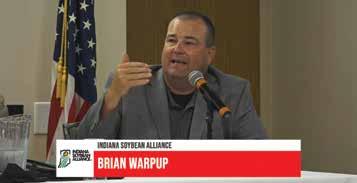
“We have more than 20,000 farmers in the State of Indiana, but a lot more of a supporting cast to get this crop out to produce our food, to produce our fuel, to produce our fiber,” Warpup explained. “There is an enormous weight on all of our shoulders to not let that fail. Some of us are scared of what this next year might look like.”
The panel took questions from the audience, and Indiana State Department of Agriculture Director Bruce Kettler also spoke at the forum. The 90-minute roundtable can be watched on the ISA website at www.indianasoybean.com/ roundtable
Similar to a scene from a Hollywood movie, Indiana farmers, corn and soybean checkoff staff were moved from room-to-room and several levels of government security prior to the release of the USDA’s August Crop Re port on Aug. 12 in the USDA building in Washington, D.C. The August Crop Report is a key indicator for farm commodity analysts because it is released just weeks before harvest.
For many years, USDA releases this information early to a group of farmers from across the country, and it shares with those farmers the process of how the crop estimates were determined. USDA does this to maintain an “open door” to the public regarding its work. This is known as the Lockup for the August Crop Report.
Since the sensitive “insider information” could impact commodity markets if released too early, no one attending the Lockup could have cell phones or any other electronic devices during the briefing.
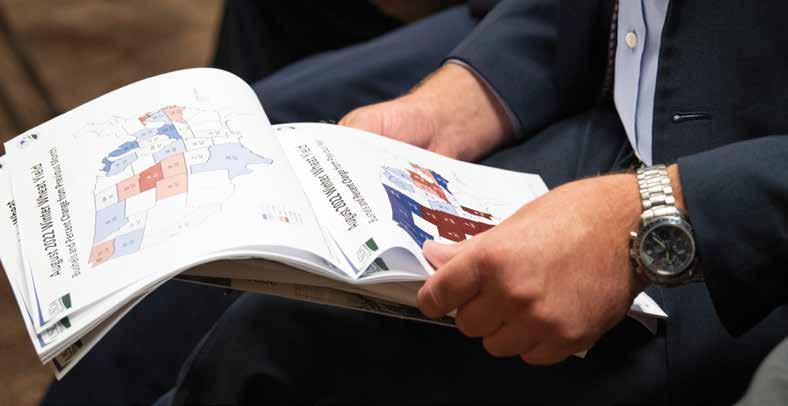
Steve Phares, an Indiana Soybean Alliance (ISA) board member and farmer from Albion, Ind., was among a group of farmers who attended. “The thing that probably impressed me the most was how serious they were about security,” Phares said. “They took our cell phones, and they were
adamant about not sharing any information before the report was released publicly.”
In addition to Phares, others attending were ISA board member Joe Stoller, a farmer from Bremen, Ind.; Indiana Corn Marketing Council (ICMC) board member Jerry Osterholt, a farmer from Roanoke, Ind.; ISA board member Brian Warpup, a farmer from Warren, Ind.; Ed Ebert, ICMC, ICGA and ISA senior market development director; Khyla Goodman, ICMC, ICGA and ISA industry affairs outreach and membership manager; and Maggie Hancock, ICGA, ICMC and ISA market development project manager.
About 45 minutes prior to the release of the crop production report, guests were able to see the data in the Lockup room. The briefing was led by Lance Hoenig, NASS crops branch chief.
“We went through security to go into the USDA building. They then took us to another room and took our cell phones away and other personal belongings. Then we went to another room, and they briefed us on how they get all of their statistics. NASS was there and from there they took us to the lockup room where there was another security checkpoint before we went in there,” Stoller said.
“When we sat down in the Lockup room, they already had printouts of the report ready for us. We probably knew the results maybe 40 minutes prior to its public release. It was really neat to see how these numbers are compiled and how these reports are put out. It’s interesting. It’s a little more secure than I would have thought. I’ve always been a little skeptical thinking that maybe the reports are leaked the night before or something, but I don’t really think they are.”
“This is important information not only for farmers, but for processors and others who buy and use corn, soybeans and wheat,” Phares says. “I got the impression that they really try hard to get this right. They have a process to come up with realistic estimates, and they follow the process.
“Other things besides crop yield go into market prices, such as exports and the potential for exports. Yet U.S. crop yields are a big part of what will affect crop prices.”
The USDA August crop report estimated the corn yield at 175.4 bushels per acre nationally, down from the near trend line yield forecast of 177 bushels. The average national soybean yield was estimated at 51.9 bushels per acre, up from the 51.5-bushel trend yield.
Phares found the Indiana yield estimates more interesting. USDA set the 2022 Indiana average corn yield at 189 bushels per acre, compared to 190 bushels in Ohio and 203 bushels in Illinois. The projected Indiana average soybean yield at 60 bushels per acre would be a record.
“I was somewhat surprised that the crop yield estimates for Indiana were that high,” Phares said. “We were very dry in June, but then we got rain in early July in my area. Our crops are looking pretty good.”
Osterholt agreed with most of the report. “(USDA) said the Indiana soybean yield was going to be a record this year,” he said. “I was surprised at that because my soybeans don’t look like they’re going to be a record, but hopefully I’m pleasantly surprised.”
Osterholt believes the corn yield forecast was reasonable.
“I think I can do that,” he said.
Stoller, too, was surprised. “That kind of caught me a little off-guard. I just don’t quite see it. That’s a pretty lofty goal,” he said of the corn estimate. “We got really dry early on for about two weeks after July 4. I think the top end of the crop was hurt, at least on the corn. Now we are seeing some rain and a little cooler weather, but now we’re seeing tar spot, too.”
Warpup said he may see yields close to the USDA estimates “We were very dry early on,” he said. “But I had 7 inches of rain in July, which really helped turn the corn crop around. I have walked my fields of corn, and I feel very positive about the outlook of my corn crop. Beans, as well, we still need some rains in August to finish those beans out.”
Warpup was amazed by the extent of the data collected from across the country for predicting fall crop yields. “It was tens of thousands of pieces of information that they get to pull this report together,” he explained. “I believe in the pro cess and feel it’s more accurate than what I felt it once was.”
Osterholt was equally impressed. USDA coordinates infor mation with National Agricultural Statistics Service employ ees across the country. “It’s amazing the work they do.”
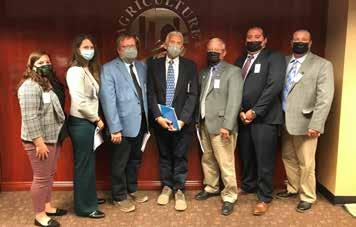
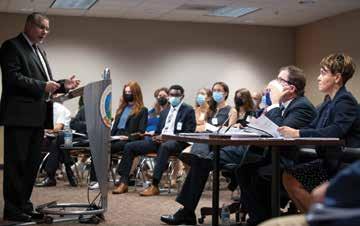
He said the crop report is important because it allows farmers to gauge how much they will make on their crops this
year and how much they can afford to spend on fertilizer and other inputs for next year.
Warpup said this report has started his planning for the next growing season. “Going into the 2023 crop year, I’ll probably fine-tune a lot of numbers just to try and put out more corn because as long as demand is still there in my area, my goal would be to grow more corn,” he said.
However, input costs remain the wildcard. “With corn inputs up substantially over the last six months, going into a new crop year I would have to rake over the prices to see if it is evident that corn return just a little bit more on my farm,” Warpup said.
Mike Beard has always had an interest in foreign trade policy and how it can help farmers. That interest has led to Beard’s second passport getting stamped by countries from all over the world.
“As a member of the United Soybean Board (USB), we couldn’t address policy issues. But as a checkoff organization, we could fund efforts to promote exports,” he said. “While with USB, I began traveling to countries to promote trade and soybeans. That’s when I became associated with the U.S. Soybean Export Council (USSEC). I’ve been to a good many places promoting soybeans for foreign trade.”
Beard, who graduated from Purdue University with a degree in agricultural economics, went straight into the industry selling a new herbicide called atrazine, which was introduced to the marketplace by Geigy Chemical Company. He purchased his first farm in 1972 and started farming fulltime in 1975.
When Beard’s wife, Pam, passed away a couple years ago, a succession plan for the farm was triggered.
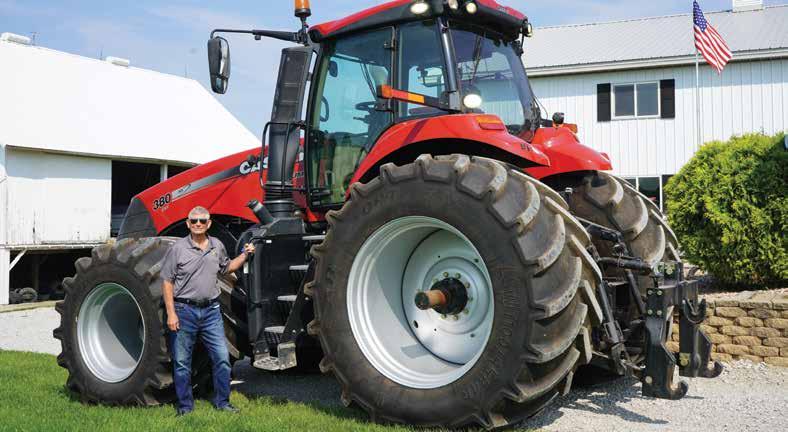
Beard’s son, David, manages the family farm today, which consists of corn and soybeans, as well as the contract growing of about 35,000 hogs per year, and a small business
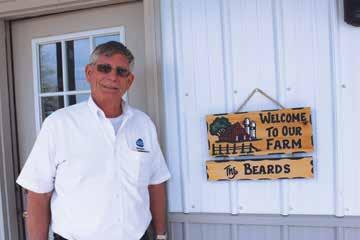
of custom application of hog manure. One of his grandsons, Elijah, who recently graduated from Purdue, assists in managing the farm. Beard’s daughter, Jennifer, manages the operation’s books and financial details.
Beard is a former president of the Indiana Corn Growers Association (ICGA) and Indiana Corn Marketing Council (ICMC) and has been president of the policy committees for the Indiana Soybean Alliance (ISA) and the Indiana Pork Producers Association. But his support and expertise does not end with this state. Beard has also served in trade and policy-related positions on the USA Poultry and Egg Export Council (USAPEEC), USB, the National Corn Growers Association (NCGA) and the U.S. Meat Export Federation (USMEF).
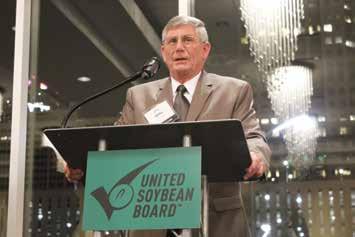
Today, Beard is enjoying the twilight of his duties as he is finishing the last years of his nine-year terms.
“It is important to understand that when you have a role in these organizations, you are there to review the projects that farmers’ monies fund, and to make sure the programs bring value to that investment,” Beard said. “Because that is an investment made with our corn farmers’ membership and checkoff dollars, so you have a responsibility to the members.”
USAPEEC, USMEF and other organizations Beard has served in have boots on the ground in several foreign countries that facilitate visits to build relationships and to make sure the farmers’ investments are being used wisely. As far as Beard is concerned, even in this digital age, nothing is more impactful in visiting importers than building relationships.
“It may not be the only factor, but I think it is very important,” Beard said. “One of the ways I think I measure the success of trade visits is seeing how long those relationships last.”
Beard added he has often found proof that these connections are in place.
“We visited the Japanese executives of the Indiana Packing Company during a trip to Delphi (Ind.) when I was with the Indiana Pork Producers Association,” Beard recalled. “Years later I was on a trade mission with Gov. Daniels, attending a reception in Japan, and next to me in line was a man named Watanabe. He remembered me from that visit, and so, Watanabe was my host and escort for the rest of the day.”
Visits to importers in other countries, as well as hosting similar groups in Indiana, is crucial to fostering better relationships. In this way, producers also get some idea of what the marketplace demands.
As Beard mused, “If an importer wants a chicken with four paws, maybe we need to address that opportunity.”
Another time, Beard was on a USSEC mission to China and at a large reception, he was recognized by an executive with China’s Chamber of Commerce. Beard had hosted the executive during a visit to his farm.
“At this reception, we were all seated at a very long table, and it was hard to see who was up front, but as we went around the table, I introduced myself,” he said. “The man who was the chair of the meeting was an executive for China’s Chamber of Commerce. When I introduced myself, he said, ‘I’ve been on his farm!’ So, you’re on the other side of the world, and there are people there who remember being on your farm. I still think relationships are very important when making a decision – deciding whether they are going to buy from the U.S. or from Brazil, for example.”
Mike Beard enjoys a laugh with other farm group leaders while representing Indiana’s pork farmers during a meeting.
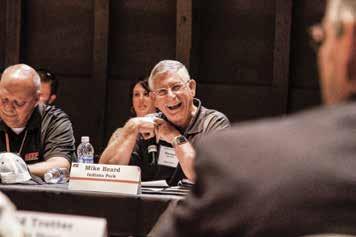
Beard said trade missions allow for the opportunity to settle questions or concerns importers may have with the quality of their imports. Corn and soy can be categorized by their quality. In Indiana, most farmers pull the highest quality of corn and soybeans out of their fields. But exported crops can also be sold cheaper in a lower quality category. That product still contains all the nutrition buyers ask for, but there is a preference for higher quality.
“I’ve been on missions where we’ve had significant questions on the quality of product of corn and soy that
we were shipping or exporting to them,” Beard said. “We had the opportunity to explain what we produce in quality at the farm level. In some cases, we were finding that they were not buying No. 1 corn in quality, they were buying No. 4, and they were getting what they were paying for. We are able to explain, that by paying a little bit more, they can get a lot higher quality of product.”
There have also been cases, Beard said, where sellers have taken advantage of the importer. Trade organizations can investigate that and find the proper avenue to correct the situation.

“We take a lot of pride in what we do produce, because it’s a top-notch product,” he said. “If they have questions or concerns, we get someone to work with them who knows what they’re doing to sort out any potential problems.”
Talking to potential importers gives Beard the chance to point out benefits of U.S. grains and meats.
“There is a level of protein, but there’s also a quality of protein,” Beard said. “U.S. quality of protein is higher than any other. We also talk about our delivery system in the U.S. We have quality grain storage and logistic systems which are capable of shipping large amounts of grain via our water transportation system in a very timely manner.
“In general, the U.S., and Indiana especially, uses less tilling and chemicals. We generally have smaller impact on the environment than other countries they may import corn from.”
Any corn or soybean farmer with access to the internet can find out how important exports are to their bottom line. Just visit our website or those of the national organizations to learn of the return on investment trade promotion invest ments generate. Beard said it’s probably not at the top of most farmers’ minds, yet we still have strong support by the checkoff programs in Indiana. This tells Beard that Hoosier farmers support the programs they fund.
“They may not know exactly what it is we do with their funding, but they are responsible for putting me and other members of the boards and councils in the position to make those decisions,” he said.
Soybean farmers depend on exports, he added.
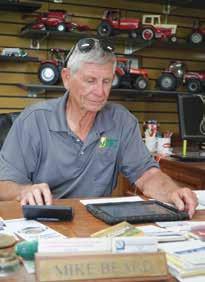
Exports comprise nearly 40 percent of U.S. soybean market. U.S. corn is not quite as dependent.
Beard speculates that farmers may have to replace some of their domestic ethanol demand. Exports are a major target for moving corn that would normally have gone into ethanol.
“Any new market helps our bottom line,” Beard said. “We don’t see many new markets here at home for corn, so increasing corn grain exports or more especially a foreign ethanol market would be terrific. We need to encourage our legislators to enable trade negotiations with other countries – having lost the opportunity of the Trans-Pacific Partnership (TPP) that former President Trump dumped, which would have included 12 countries.”
Beard said not pursuing bilateral trade agreements affects the ability of U.S. commodities to compete in exports, no matter how many trade missions are made. He said if those countries are not friendly to importing from the United States, then it will not happen. When Beard worked with USAPEEC, tariffs on poultry had been so heavy there was no market in China. Through COVID and other situations, tariffs have modestly dropped, and a Chinese poultry export market has been pieced together.
When Beard’s wife, Pam, passed away a couple years ago, a succession plan for the farm was triggered. He farms with his son, David; daughter, Jennifer, and grandson, Elijah.
“But it is still subject to tariffs and a rather fragile market overall,” Beard said. “Because you never know from month to month what may become of that market, or if it will exist at all.”
As Beard puts it, there are at least two legs to this stool, and one of them is government trade policy. He said producers should be encouraging legislators and administrators to promote foreign trade.
“I think when the Indiana corn or soybean grower takes time to think about their markets, they come to the conclusion that exports are important,” he said. “But we tend to focus only on raising the product.”
Once it’s out the gate, growers tend not to think about where that product goes, Beard said. But someone does need to think about it, which is why he and commodity organizations travel the world promoting U.S. agricultural exports.
Editor’s Note: This story was written from the perspective of Korean writer Ann, Hee Kyoung. The Indiana Soybean Alliance invests checkoff dollars into the Soybean Oil Masters Program and hosts trade teams such as the Korean Oil graduates throughout the year with the goal of building business relationships and increasing market demand for Indiana soybeans and soybean oil. Ann participated in one of these tours this summer.
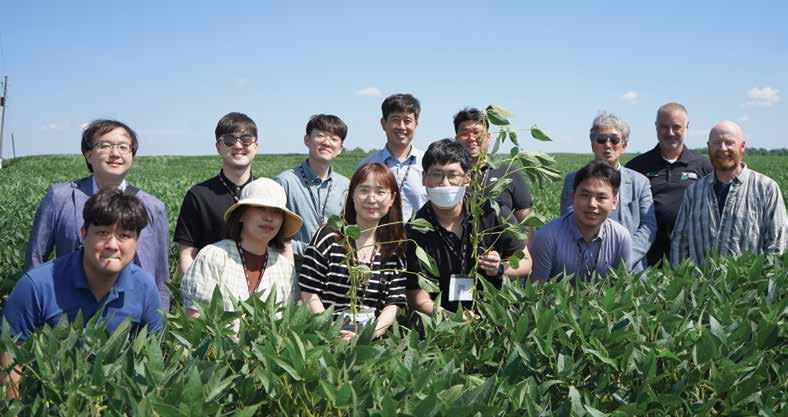
In the future, stockbrokers will drive taxis and wise farmers will drive Lamborghinis.”
Jim Rogers, a world-renowned investment expert, once recommended that young people choose agriculture as their major instead of a master’s degree in business administration and predicted that agriculture would become a future-oriented industry.
Perhaps Rogers was right. The world’s eyes are now focused on the U.S. grain market due to the growing instability in grain supply and demand caused by the war between Russia and Ukraine, and the fallout from the COVID-19 crackdown on grain warehouses. The United States is the world’s largest corn producer and the world’s second largest soybean producer.
U.S. farmers are making generous investments in agriculture and approaching it as a future-oriented industry.
With the help of the Indiana Soybean Alliance (ISA), Korean food industry workers who have achieved outstanding results among the Soy Oil Masters graduates established by the American Soybean Association (ASA) recently visited Indiana to learn about the future direction of U.S. agriculture and the soybean industry. This visit helped participants consider the future direction of agriculture through the current state of agriculture in the United States.
As of last year, the U.S. produced 4.44 billion bushels (120 million tons), or 57 million metric tons, of soybeans alone. This accounts for 35.9 percent of all global exports.
Indiana, along with Illinois, Iowa, Nebraska and Ohio, is among of the major U.S. soybean producers with more than 20,000 farmers cultivating soybeans. In addition, 60 percent of the soybeans produced in the Indiana are processed in the state, and the soybean industry is a major industry in Indiana.
ISA, Indiana’s soy checkoff program, provides a variety of educational opportunities to soybean importers through self-
help funds to increase U.S. soybean preferences and market accessibility. In particular, ISA opens various promotional and educational programs where expectations for the Korean market are high.
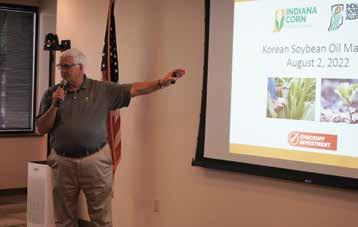
“Korea is one of the largest importers of U.S. soybean oil and plays a central role in innovative ideas in the U.S. soybean oil business,” said William McNair, Director of Human Nutrition and Oil of the U.S. Soy Export Council (USSEC).
Indiana, which produces the most high-oleic soybeans in the U.S., has recently attracted attention and is expected to become a mecca for the soybean-related industry.
“The Soy Oil Masters program is one of the continuous programs to train soy oil experts,” McNair said.
The Soy Oil Masters program is a free, training course for Korean food service industry workers from the American Soybean Association to inform them of the nutritional value, economic value and advantages of soy oil in food processing. In particular, the Soy Oil Masters Program has become a global program operated not only in Korea but also in Japan, China, Taiwan and Latin America, increasing its expertise every year.
Starting with 79 Soy Oil Masters in 2018, 89 Soy-oil Master in 2019 and 83 Soy Oil Masters in 2020, 102 Soy Oil Masters were trained in 2021. A Master is someone who has passed a certification test. Each Master will be provided with continuous market conditions and technical information.
Top participants are provided with the privilege of visiting the U.S. soybean industry. In fact, 14 out of the first-term masters were selected and toured the U.S. soybean industry in 2019. The second- and third-term industrial tours were postponed by COVID-19 until this year.
Some 20 Soy Oil Masters who visited Indiana in August were selected for their outstanding performance among the second and third terms, including experts from leading
Korean food companies such as Jeong Foods, Samyangsa, Sam-Yuck Food and Lotte Food. In particular, the program’s training was enhanced through courses provided by ISA and tours of Indiana’s rising industries.

Hwang Soo-ji, a researcher at Lotte Food, said, “This tour helped to understand the U.S. soybean industry as well as sustainable agriculture.”
Yoo Dong-jin, a researcher at Samyangsa Corporation, said, “I was very interested in the oil market. In this tour, I was very happy to have get professional information directly from the U.S. soybean producers.”
What is the difference between high oleic soy oil and conventional soy oil?
High oleic soybean oil has the highest oxidation stability among commercial oils and is suitable for tempura oil. In particular, high oleic soy oil is gaining popularity as it has been proven to maintain healthy body blood components and reduce the risk of cardiovascular disease.
According to a study by Corteva, a multinational agricultural company, U.S. soybean oil actually has a 0.5-1 percent higher oil content than other countries’ soy oil.
“High oleic soy oil has the highest stability in commercial oils, but this stability is due to changes in fatty acid composition and the inclusion of beneficial antioxidants,” said Susan Knowlton, a senior researcher of Corteva
For this reason, the popularity of high oleic soy oil has increased recently, and the planting of high oleic soybeans has doubled for two years from 2020 to this year. But the supply has been insufficient due to increased demand. Due to the recent war between Russia and Ukraine, the supply of oil has become difficult, and the imbalance in supply and demand of oil has led to a general shortage of soybeans.
Ed Ebert, ISA Senior Director of Market Development, said, “We will produce more high oleic soybeans next year, but you need to make an early decision if you want to buy them because of the increased demand.”
Officials explain that the difference between U.S. soybeans lies in ‘sustainability’ rather than high quality.
“The biggest difference between the U.S soybean and soybeans produced in other countries is that – compared to Brazil and Argentina – U.S. soybean growers emit less greenhouse gas and have no problems such as deforestation, labor or exploitation,” McNair said.
In fact, the soybean farmers I met in Indiana clearly practiced the value of sustainability.
The Howell family farm in Middletown, Ind. is a large-scale farm that grows soybeans and corn. The Howell farm, which is run by family members without external investment. For two generations, this farm has followed environmentally sensitive sustainability practices.
Kevin Kelley, ISA Board Member and soybean and corn producer from Brookston, Ind., makes a side income from repairs to farm equipment and electricity generated by wind farms. Agricultural machinery-related projects are targeted not only in the U.S. but also in Canada.
There are also farms that realize sustainable agriculture on a different model.
“My son and I take specialized machinery classes to repair all agricultural machinery necessary for cultivation, as well as repairing agricultural machinery in Indiana,” Kelley said. “Since crops are affected by external factors such as climate and crop conditions, we are building a farm management system.”
ISA Board Member Gary McDaniel, a farmer from Boonville, Ind., said sustainability is about preparing for the future. “I run a 1,500-acre farm (6,072,84 square meters) with corn, soybeans and livestock,” McDaniel said. “My 29-year-old son and his 5-year-old grandson farm together. More than 20,000 soybean farmers in Indiana, like me, are building farms for future generations.”
He added, in addition to protecting the rights and interests of soybean farmers, Indiana farmers are also engaged in many social activities. McDaniel opens his farm to hundreds of newlyweds for weddings.
“I’m really happy to spend a lot of time with my family and work with them,” he said. “We strive for sustainable agriculture by maintaining our strength and minimizing our work in order to hand over farms that have been built for several generations, for more than 120 years, to future generations. The 120-year history of the farm is the pride of our family. I will continue to work for future generations.”
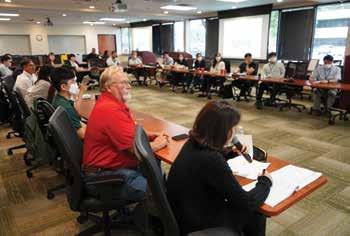
“The Soy Oil Masters program does not end at the gradua tion ceremony, but it is the beginning of continuous support for those selected as masters to become soy oil experts,” said Lee Hyun-seok, Country Director of the Korean Office of USSEC. “We will continue to provide masters with opportu nities to understand industries such as technical assistance, sharing market data, and inspecting the soybean industry so that the Soy Oil Masters program can lead to a comprehen sive program representing the soybean oil industry.”
He added, “The visit of the U.S. soybean industry tour team will be a clue to understanding the U.S. soybean industry.”
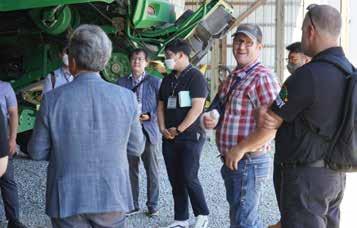
Korean soy oil buyers are interested in learning what they can about how American famers define sustainability. “To understand the rising industry in the United States, we need a deep understanding of ‘sustainability,’” Hyun-seok explained. “Looking at farms that have been farming for more than 200 years, I think we will be able to confirm the value beyond quality with the rise of the United States through
consideration of U.S. agriculture.”
USSEC is raising the excellence and industrial understanding of the rise of the U.S. Soy industry through professional programs such as the Soy Oil Masters program, the Soy Oil Grand Master program, and the Soyfood Master program.
“Soybeans are an important ingredient in Korean diet,” Hyun-seok said. “I hope that there will be more soy masters in Korea through various programs prepared by the USSEC.”
Another stop on the tour was Purdue University’s Corn and Soybean Innovation Phenotyping Center. Equipment in the greenhouses at Purdue University scans flowerpots moving on conveyor belts, records growth and humidity conditions, and collects the data.
Purdue University, which is considered a premier global agricultural university, is developing soybean seeds through phenotyping. This technology measures and analyzes crop growth conditions. In Korea, the Korea Institute of Science and Technology (KIST) started research to implement a Korean-style smart farm in 2015 and was introduced into a tomato cultivation smart farm in Taean, Chungcheong.
There are hundreds of start-up companies related to phenotyping that are flying drones over cultivated land, taking images, accumulating data on crops, and obtaining information on yields. Global seed companies such as Bayer, Syngenta and Corteva are doing their best to develop seeds by identifying better genes through phenotyping.
Purdue University has realized smart farms through phenotyping technology and is developing the best seed breeding through more precise analysis.
Jian Jin, assistant professor of agricultural biological engineering at Purdue University, said, “Phenotyping is a concept of traits that can be found as a result of genotyping related to genetics, which can check plant growth faster and more accurately.”
Purdue University has built a campus digital phenotyping facility and collects data 24 hours per day by scanning all plants with RFID (radio recognition) when greenhouse plants move through conveyor belts. Research is being conducted to confirm drought tolerance by changing conditions while collecting data.
Purdue University checks the condition of plants in two greenhouses and one growth room through a super-
spectroscope system. If a television or monitor shows colors through RGB (red, green, blue), the super-spectroscope can show 500 colors, check the diseases, moisture and nutritional status of plants that cannot be seen by the naked eye, and judge growth more accurately. Purdue has invested $6.5 million in these types of research facilities and can grow up to 256 plants in the largest growth room in North America.
Practical application of solutions to farm problems is essential to good research.
The Indiana Corn and Soybean Innovation Center at Purdue University, funded partly by ISA, is responsible for applying phenotyping and other soybean-related technologies directly to farms.
It is a practical space where even the corridor of the research building is used as a research space, and it serves as a model research complex for the Indiana soybean industry by cultivating corn and soybeans so that more accurate data can be collected and analyzed.
The Innovation Center sows seeds on a large-scale cultivated land based on GPS, then installs superspectroscopes developed by Purdue University and collects data directly.
If universities use related technologies to plant soybeans and corn, the innovation center will effectively anticipate the problems caused by applying new technology to cultivated land that is similar to Indiana’s environment.
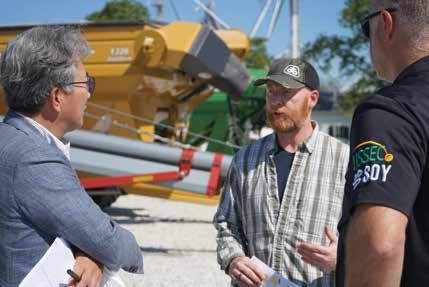
In addition to research on soybean and corn seeds and cultivation, research has been conducted on equipment that can produce the best results. A thresher is a typical type, and when corn kernels are put in, they are classified according to color and grain size.
Corteva is an agricultural company that produces and sells many seed varieties. Along with Bayer and Syngenta, Corteva is regarded as one of the top three global agricultural companies. The company also produces and sells crop protection products such as herbicides and insecticides.
According to industry sources, Corteva accounts for more than 60 percent of the global seed market. Monsanto, which was acquired by German pharmaceutical company Bayer, and Syngenta, which was acquired by China’s ChemChina are the other major players.
According to Reuters, Corteva is estimated to account for 30 percent of the U.S. soybean market in 2021 – a strong year for soybean seed.
Corteva highlighted a variety of programs during a tour of their headquarters in Indianapolis, Ind. The Corteva headquarters’ laboratory, which focuses on crop protection agents is developing products through hundreds of thousands of tests.
Corteva said it takes 9-10 years for a single product to go from development to release and said, on average, it spends $256 million to develop safe and reliable crop protection products that it considers safe for farmers and consumers.
At Corteva’s research institute alone, there were 70 chemical experts and 350 researchers, including engineers and bioengineers.
A researcher at a Korean food company who visited the Corteva headquarters said, “The size of the laboratory and the budget itself are unimaginable. I was awed by the fact that the laboratory repeated hundreds of thousands of simulations for control.”
The Corteva Research Campus in Indianapolis focuses on the crop protection business.
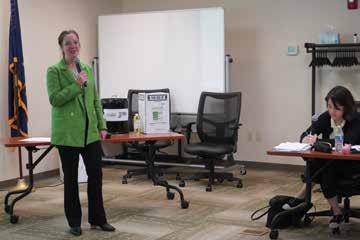
“Corteva is concerned about the efficiency and sustain ability of food production and is working to help farmers to produce safe and nutritious food,” said Matt Rekeweg, U.S. Industry Relations and Food Chain Leader at Corteva.
“There will always be a need for pest control,” Rekeweg said of the shrinking crop protection markets, also known as agricultural chemicals. “Producing crops, or farming for food production, is different from ordinary plant cultivation. If we farm as it is, pest control is essential because we cannot meet the demand, at all, in terms of productivity.”
However, Corteva is also developing specific products to meet this global trend and studying technologies that can maintain productivity while using fewer chemicals.
The company is developing crop protection agents with technology that uses artificial intelligence to inject precise amounts during the process of spraying crop protection agents. Biological products that are not existing chemical products, i.e., products made through biological sources such as bacteria and fungi, are also under development. Corteva expects this new market to grow with the organic market.
“The ultimate goal of Corteva is to work with farmers to produce food that consumers want and to protect and use crops around the world efficiently,” Rekeweg said. “The most important thing is to work with producer organizations such as ASA and the ISA to maintain close ties with the food industry.”
Corteva has won the Environmental Protection Agency’s Eco-Company Award five times for its efforts.
The tour through Indiana featured various programs that allow visitors to experience the growth, characteristics and advantages of soybeans in the United States.
The Glass Barn, which opened in 2013, serves as an educational center to inform consumers of the strengths and uses of soybeans in Indiana. Located at the Indiana State Fairgrounds, the Glass Barn attracts thousands of visitors every year and features a simulation of how soybeans are harvested.
What is noteworthy is that the Glass Barn allows visitors to experience farming and soybean’s advantages through game consoles.
A large combine harvester simulator, located in the center of the Glass Barn, is a near life-sized display and is popular because visitors can feel the actual vibration when harvesting crops through a simulation program of harvesting soybeans.
The Glass Barn also educates consumers about high oleic soybean oil and allows visitors to talk virtually with farmers and industry experts in its virtual theater. During the tour, our group was able connect virtually with Corteva Senior Researcher, Knowlton, who talked to us more about higholeic opportunities. Ebert also took part in the discussion.
“High oleic soybean oil has no trans fat and is eco-friendly. I expect demand to increase,” said Ebert during the Glass Barn tour. “I think high oleic soy oil is a rediscovery of soy oil because 75-80 percent is oleic acid, less than 12 percent is saturated fatty acid. I think it is a very economical oil
because it has good oxidation stability and uses tempura oil for a longer period of use, and from the standpoint of a food manufacturer, the storage period is longer. It was developed for food manufacturers, but recently it has been used in automobile-related products and is very useful in the chemical industry. It is eco-friendly and has a very high oxidation stability compared to canola oil.”
Ebert continued, “High oleic soy oil has less polymer accumulation and can be seen as less oily and less solidified than other oils and fats. The price is still a little high, but I think the higher the cultivation rate, the lower the price. The demand for high oleic soybeans will increase and the cultivation rate will continue to increase.
“Soy farmers in Indiana produce 70 percent of the U.S. high-Oleic soybeans. Indiana will be in the spotlight as the center of high-Oleic soybeans in the future. We hope more people will visit Indiana, visit the ISA, and get a lot of informa tion. And I hope more people will try high oleic soy oil.”
Soy Connext is the U.S. Soybean Export Council’s (USSEC) premier annual summit, bringing together U.S. soybean farmers, international customers of U.S. Soy and industry leaders to build stronger relations and partnerships. With inflation rising around the world, the Russian invasion of Ukraine and other geopolitical shocks, this year’s gathering was more important than ever.
More than 600 international buyers and sellers of U.S. Soy, representing more than 60 countries, convened in San Diego, Calif. for the Aug. 22-24 event.


Attendees heard from 30 speakers who delivered invaluable insights into market trends, new innovations that can alleviate the impact of climate change, the role of soy in transforming nutrition around the world, and opportunities for farmers of U.S. Soy to meet growing global demand for soybeans.
A clear theme at this year’s Soy Connext event was the mix of challenges currently facing the industry.
Anja Manuel, co-founder and partner at Rice, Hadley, Gates & Manuel LLC, a strategic consulting firm that helps U.S. companies navigate international markets, offered a warning to “buckle your seatbelts” as geopolitical uncertainties continue to create great uncertainty.
She told the audience that business could be difficult to predict and plan as a result of the Russian invasion of Ukraine and that Chinese demand – while still growing –was slowing from a previously strong pace. Furthermore, Manuel said populist governments around the world are retreating from globalization, putting at risk trade and open borders.
However, while these risks are significant, Manuel said it was also a chance for U.S. Soy farmers to readjust. Instead of focusing on one export market such as China, farmers should look at exporting to 8-10 different markets. “We talked about Southeast and South Asia. These are smaller countries – not as big as China by itself – but they are fastgrowing, great new middle classes,” Manuel said. “There are international markets out there. It’s just going to take
more persistence to find them and continue being in the international system.”
Inflation is also causing headaches across the board, creating pressures for both farmers and buyers of U.S. Soy as costs increase. Addressing Soy Connext, Matt Ammermann, commodity risk manager and vice president, Eastern Europe/Black Sea Region for StoneX Financial, said that inflation – along with other pressures – is having an impact on the vegetable oil market, including soybean oil, palm oil, sunflower oil and others.
Ammermann said that in addition to inflation, drought conditions in areas of Europe, the U.S. and China are feeding into the push for clean energy to mitigate climate change. The war in Ukraine is also hurting shipments through the Black Sea region, adding that while there are some ship movements, they are mainly carrying corn and other grains. He said that oil exports will likely remain dependent on the land route and increased crush in other parts of Europe.
While these challenges confronting the industry are likely to linger for some time, Soy Connext also provided valuable insights into the opportunities that exist.
According to USSEC, global soy consumption has exceeded global soy production for the past three years (2019-22). Additionally, soy consumption and production over the past 20 years has doubled. Soybeans continue to be the United States’ No. 1 food and agricultural export.
“Climatic, economic and geopolitical events are testing the resilience of the global food system. Uncertainty is the word of the day. We are honored that international companies are rewarding soy’s low carbon footprint, optimal nutritional bundle, high refining rate, low refining cost and reliable production and exports by importing record volumes to advance food and nutrition security in the 82 countries we serve,” said Doug Winter, USSEC chair, USB farmer-leader and Illinois farmer.
Marty Ruikka, president of The ProExporter Network, told guests that opportunities also exist in the rapid urbanization that is happening around the world, which is driving the acceleration in trade intensity.
Ruikka said that with about 80 million people moving to cities each year, the dependence on the global commercial food delivery system is growing. He forecast that soy production needs to increase by about 8 million metric tons per year for stocks to stay even, adding that the U.S. will continue to be a reliable supplier of whole soybeans, soybean meal and soybean oil.

Meanwhile, USSEC sustainability director Abby Rinne announced at the annual conference that the U.S. Soy Sustainability Assurance Protocol (SSAP) has earned Silver Level Equivalence when benchmarked with the Sustainable Agriculture Initiative (SAI) Platform’s Farm Sustainability Assessment (FSA) 3.0. It is the latest third-party recognition of the sustainability of U.S. Soy, joining the European Feed Manufacturers Organization (FEFAC), Global Seafood Alliance: Best Aquaculture Practices — Sustainable Feed, The Consumer Goods Forum, the Tokyo 2022 Olympics and the UK Roundtable on Sustainable Soya, all of which have already positively benchmarked the SSAP.
“This designation is important for international customers of U.S. Soy and holds the potential to expand markets, especially in Europe where demand for FSA designated soybeans is greater,” said Rinne. “The biodiversity, conservation practices, health and welfare, and continuous improvements that U.S. Soy farmers demonstrate every season are the foundations of the SSAP and what helped U.S. Soy achieve verification. Food companies are looking for more ways to demonstrate the sustainability of their supply chains, and U.S. Soy is committed to help them meet their customer and consumer expectations.”
During the event, USSEC also launched the new Soybean Value Calculator, an innovative tool for soybean crushers to calculate and compare the economic value of soybeans from various countries. Customers can enter companyspecific data along with soybean composition and physical factor data to analyze the potential economic benefit of choosing U.S. soybeans over soy of other origins.
The Soy Connext summit also provided an opportunity for international buyers and customers to visit U.S. soybean farms across a dozen soy-producing states to transparently engage with farmers, inspect the crop and discuss challenges, needs and opportunities.

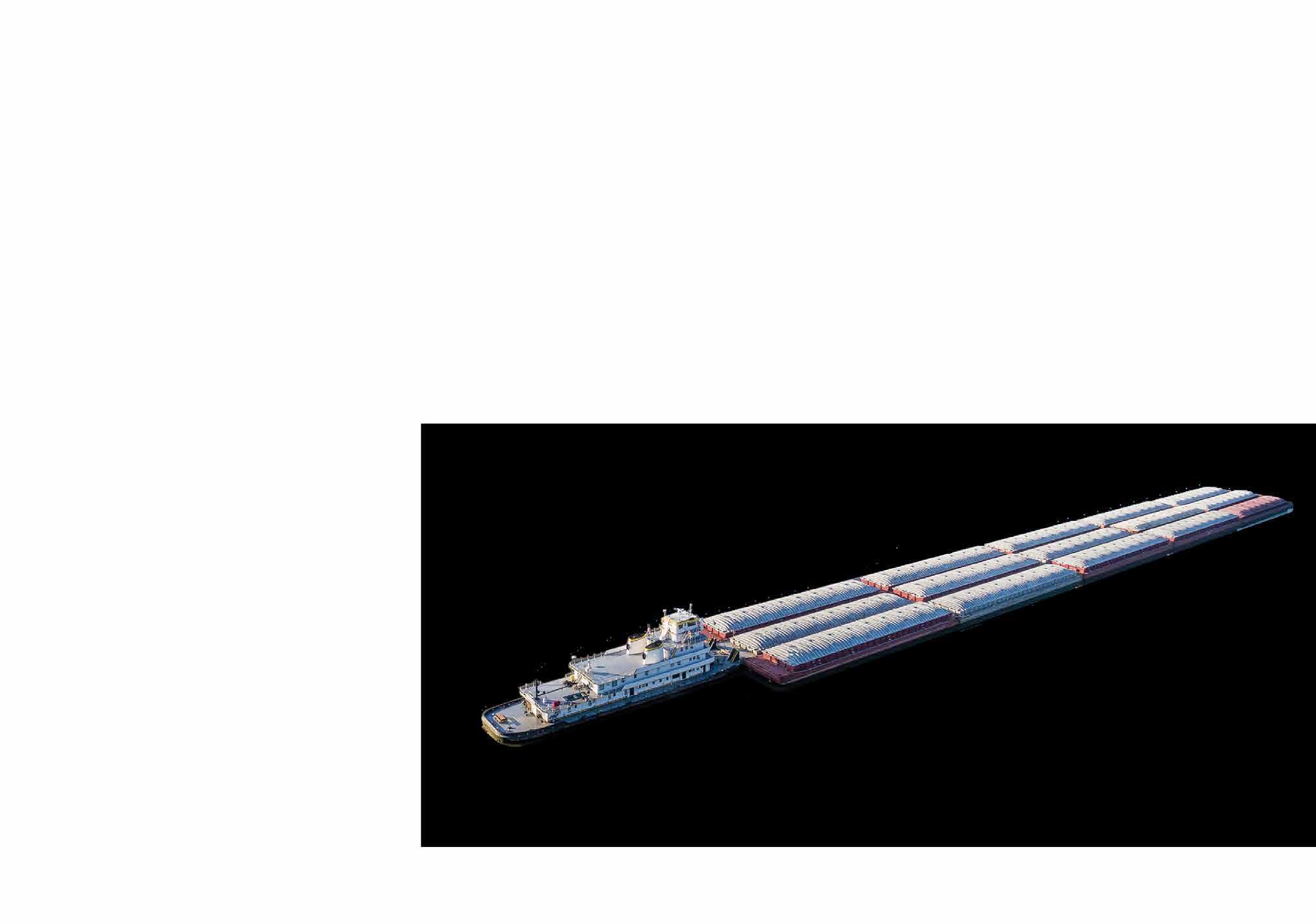


Two years ago, the U.S. Army Corps of Engineers and Louisiana Department of Transportation and Development signed a partnership and started working on the $250 million dredging project to deepen that portion of the Mississippi from 45 to 50 feet.
Working on the Mississippi River gave one of the United States’ more prolific humorists his pen name –Mark Twain – and sparked his writing career. The extensive river system also enables the livelihood of U.S. farmers to market their goods overseas – including soybeans and corn.
Winding more than 2,300 miles from its headwaters in Minnesota, the mighty waterway feeds into the Gulf of Mexico at New Orleans, where a five-year effort to deepen the draft of roughly the last tenth of that journey is about halfway complete. Mike Steenhoek, executive director of the Soy Transportation Coalition (STC), based in Iowa, noted large agricultural processing companies have several facilities located along the 256 winding miles between Baton Rouge and the river’s mouth 100 miles past the Port of New Orleans.
Two years ago, the U.S. Army Corps of Engineers and Louisiana Department of Transportation and Development (DOTD) signed a partnership and immediately began work
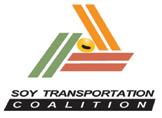
on the $250 million dredging project to deepen the vessel draft of that portion of the Mississippi from 45 to 50 feet. The stretch of river is home to the Lower Mississippi River Deep-Draft Ports Complex, which includes Baton Rouge, South Louisiana, New Orleans, St. Bernard and Plaquemines ports.
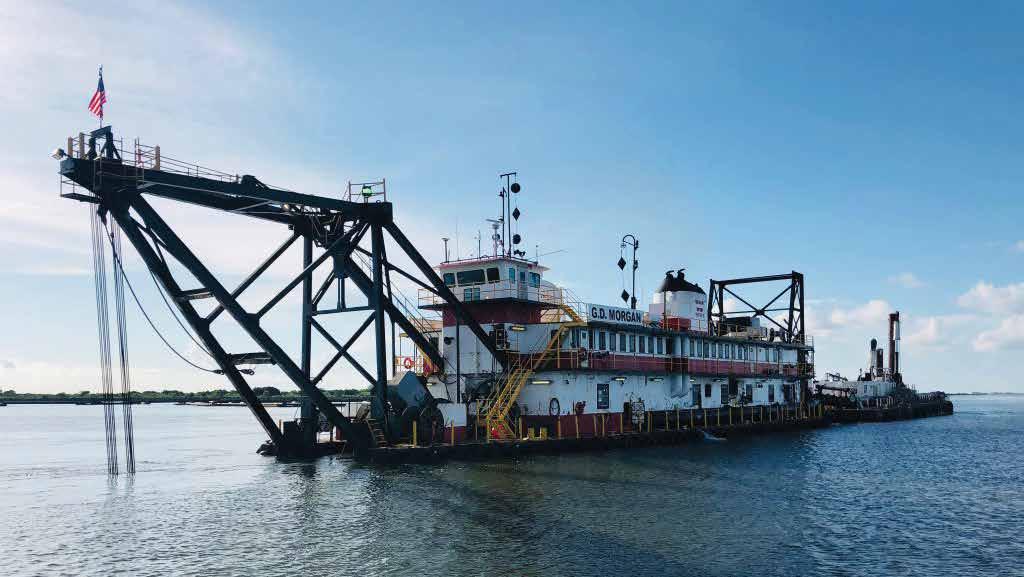
“Of all the launching points for soybeans and corn, the Lower Mississippi is by far the pre-eminent one,” Steenhoek said, adding nearly 60 percent of the nation’s soybean and 59 percent of its corn exports are loaded onto ships there.
The STC is comprised of 13 state soybean boards including the Indiana Soybean Alliance (ISA), the American Soybean Association (ASA) and the United Soybean Board (USB). Years ago, Steenhoek said, these groups wanted to get more involved with a coalition of federal, Louisiana and other states’ river beneficiaries pursuing funding to make the 50-foot draft a reality. He said STC raised $2 million from the USB toward the project, but also helped build an
argument for the work and advocated in Washington, D.C., toward the 75 percent federal funding needed to make it a reality.
In 2018, STC completed a report showing the advantages of the dredging. In February 2020, official approval came at the federal level; and by that September, dirt was being moved.
“Since then, they’ve been making steady progress, and they recently increased allowable water depth for the Gulf of Mexico to New Orleans to a full 50 feet,” Steenhoek explained. “The ultimate goal is to go for that full 256 miles to (be) 50 feet all the way.”
The Engineering News-Record reported in February that ships had begun using a new 48-foot draft standard, which was the first change since the 47-foot standard “controlling draft” was set in the 1980s. It added the Corps and its subcontractors had by that point lowered the first 172 miles of the river to an actual minimum depth of 53 feet – which allows ships to safely navigate with a 50-foot draft.
In August, various media added the dredging project had completed its first phase; Steenhoek said it may be another three years before the project is done. Because that part of the river twists and turns, it is susceptible to sediment buildup that has to be removed more frequently.
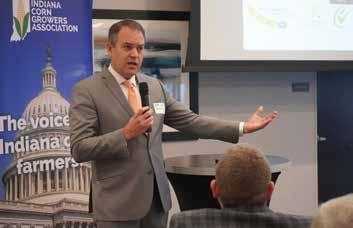
Sediment removal is already regular maintenance on other parts of the Mississippi and its tributaries, such as the Ohio River that borders Indiana. He noted some sediment is deposited in areas near the Gulf as part of wetlands restoration to preserve or rebuild avian and aquatic wildlife habitats.
“As you deepen that part of the river, you increase the prospect of encountering one of those (oil) pipelines” buried beneath the riverbed, he explained. A major part of the dredging project is keeping track of the pipelines’ locations and working with oil companies that are responsible for
moving them.
He said USB always wants to invest strategically in infrastructure that aids growers. “They wanted to do something, like I did, that would ‘move the needle’ –something tangible,” Steenhoek said of suggesting the $2 million toward the non-federal share of this project a few years ago.
In the 2018 report, STC estimated soybean growers would save 13 cents per bushel on transportation costs because deepening the river allows ships to be loaded down with more cargo. In fact, the five-foot ship draft difference from 45 to 50 feet allows a staggering 20 percent more beans, or about 500,000 bushels, to be loaded per vessel. More goods per ship means cheaper per-unit transport cost.
These savings should be passed along to farmers at the basis point of sale. Steenhoek said of the upriver ag states, Illinois is likely to see the highest benefit because so much of what its farmers ship goes by water. But even in Indiana the report estimated soybean growers will collectively keep $42 million more income annually after the project is finished – thanks to more favorable basis. Nationally, growers could save $461 million.
Greensburg, Ind., grower Mike Koehne ships overseas about half the soybeans and corn he produces on 900 acres, via ship container to Japan and Taiwan. The 30-year, first-generation farmer is also vice chair of the ISA and one of two Indiana board members on the STC.
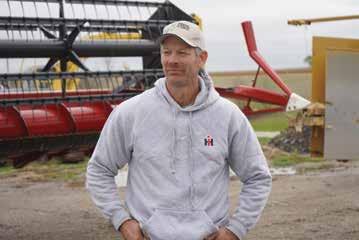
Investing checkoff dollars into projects like this shows the
commitment of ISA and other states to the importance of waterways in ag commerce. This investment also persuades legislators and policymakers to allocate public funds for their upkeep. “I think it opens their eyes a little bit into seeing the importance,” Koehne noted. “And when it’s all said and done, I think it’s going to be a big deal.”
Making the Lower Mississippi more accessible to larger
ships and heavier loads also benefits farmers importing fertilizer, fuel and other necessary items to their livelihoods – not to mention the non-ag industries that should benefit from deepening the riverbed. “It’s going to affect our bottom line, I think, dramatically,” he said.
According to the American Association of Port Authorities, the return-on-investment ratio is $7.20 in economic gain for every $1 spent. The Authority said an estimated $40 billion in new investments are proposed for facilities already in various stages of development along the Deep-Draft Ports Complex. Including soybeans and corn, the Authority estimates 70 percent of the nation’s grain exports move through this channel.
The U.S. has a major advantage over other ag exporters globally, Koehne said, thanks to its network of rivers and lakes. “It’s just the efficiency of our transportation system,” he explained. “The inland waterways are an advantage to us in a big way. Can you imagine if we had to ship all this stuff to the coast (only) by rail or highway? It would bottleneck.”
Steenhoek explained that creating less expensive shipping along the Mississippi River creates more modal competition. It puts pressure on land shippers, such as rail companies, to re-examine the freight rates they charge customers such as farmers, especially where there’s direct geographic choice between land and water.
“That’s something that really excites us,” he said.
“But we have to keep maintenance up on the infrastructure or we will fall behind,” said Koehne, referring to regular work done on other parts of the river and tributaries, as well. That maintenance is not just riverbed sediment removal but repairing or replacing locks and dams and more. Losing a section of river at any time to non-maintenance, “is almost like you take a major road, and you take the bridge out – and look at the chaos it causes,” Koehne said.
Steenhoek referenced some maintenance is being done on the Ohio River and other inland waterways thanks in part to an infrastructure bill Congress passed in late 2021.



The U.S. waterway system, according to the Soy Transportation Coalition, gives American farmers an export advantage because many ag commodities can be moved efficiently.
The bill contained $17 billion specifically for ports and waterways, including $2.5 billion for inland waterways to help replace some locks and dams and add new ones as auxiliary chambers. But he said STC is also interested in promoting other waterways options.
For instance, the Great Lakes-St. Lawrence Seaway System to the Atlantic Ocean through the northeastern U.S. is a launching point for about 2 percent of U.S. soybean exports, but STC would like to see it more frequently used. Last year, STC signed a Gateway Incentive Program agreement with the St. Lawrence Seaway Management Corp. that means a 50 percent reduction on shipping tolls for new shipments of soy and other ag freight via the Seaway.
Incidentally, the Seaway – which includes the Great Lakes – is about the same length as the Mississippi River and also flows from Minnesota.
“Our focus is how can we create more diversity in our supply chain? How can we create more options?” Steenhoek said. He urges ag exporters, who can, to consider this byway and not “put all your eggs in one basket” – or in this case, all of one’s grain in one container.
To learn more about the St. Lawrence Seaway Gateway Incentive, visit greatlakes-seaway.com/en/commercialshipping/incentive-programs or call 515-727-0665.

The U.S. Grains Council (USGC) is constantly looking to create new export markets and develop international relationships on behalf of U.S. farmers. The increasing global commitment to fight the climate crisis via ethanol blending has presented an opportunity for the Council to ensure U.S.-produced ethanol is the preferred choice at the pump worldwide.
A crucial pillar of the Council’s mission is to improve lives, and the numerous benefits of ethanol blending have the potential to do that on a massive scale.
Council staff in its Latin America office (LTA) recently traveled to Chile to join a group of consultants assessing the country’s fuel supply chain. The project aims to determine the most feasible and effective logistical model to implement an ethanol blend policy in the country.
“Blending ethanol with gasoline presents a costeffective, short-term opportunity for Chile to make progress toward its goal of decarbonizing transportation, and this assessment is a key contribution to efficiently determine its effectiveness and how to best go about it,” said Marri Tejada, USGC LTA regional director.
The Council signed a memorandum of understanding (MOU) with Chile’s Ministry of Energy and the national oil company, ENAP, last March to establish a collaborative structure to explore opportunities for the use of biofuels in the country. The current study is being developed under that framework and is enabled by a grant provided by Indiana Corn Marketing Council and
resources from the Council’s LTA office. Once completed, the study will be used by the Ministry of Energy and ENAP to complement the refining, environmental and fleet analyses that will be conducted over the next few months as part of the process of regulatory and policy changes required for the implementation of an ethanol blend policy.
“The willingness of Chile’s government and fuel industry stakeholders to conduct a thorough review of the infrastructure and logistics feasibility of ethanol blending is a major accomplishment for the Council, as only three years ago it was not included in the country’s energy policy or the industry’s agenda,” Tejada said.
Under the workplan developed by the government and ENAP officials, with collaboration from the Council, the process is expected to culminate by late 2023 and could open the market to approximately 130 million gallons of foreign ethanol per year, based on Chile’s current gasoline consumption. The Council will continue to work with the Chilean government and the various fuel supply chain stakeholders to unlock the full possibilities of ethanol use in the country.
A Council team also traveled to Brazil in August to learn about the market potential Brazilian corn ethanol has domestically and globally and about the logistics faced by U.S. ethanol exporters at the main ports situated in the northeastern part of the country.
While there, the group had the opportunity to meet with
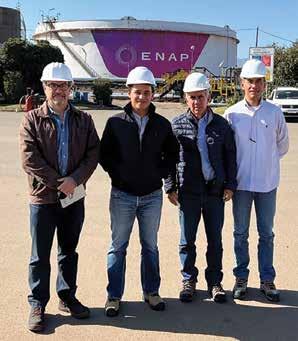
many different industry associations, ethanol producers, port operators and union leaders in the country.
“By meeting port authorities and ethanol traders, our group was able to learn the complexity of trading ethanol in the north and northeast areas of Brazil and to assess the potential obstacles that the industry needs to overcome to regain market share in the country,” said Juan Diaz, USGC LTA ethanol consultant.
The Council has been active in Brazil advocating to reduce the duties applied to U.S. ethanol and to help certify ethanol plants under the RenovaBio program, a government initiative to reach carbon reduction goals. In March 2022, Brazil decided to drop the common Mercosur duty of 20 percent on all ethanol imports until Dec. 31 as an anti-inflationary measure. Council efforts this year have been aimed at turning this into a permanent decision.
Involvement in the RenovaBio program continues to be unreachable for U.S. exporters since the Brazilian government has not defined the rules for other feedstocks to get certified under the program. The Council is working to reduce the extensive data requirements and to unify land use criteria that currently limits U.S. corn ethanol from accessing the carbon credit (CBios) market that represents extra revenue for biofuels producers in Brazil.
“Brazil enjoys an average ethanol blend of 27.5 percent within its national fuel supply, making it the top per capita consumer of ethanol in the world. The Council seeks to learn how both the U.S. and other countries could
Pictured from left are Duane Kristensen, Chief Ethanol Fuels, Inc.; Mackenzie Boubin, USGC director of global ethanol market development; Juan Sebastian Diaz, USGC regional ethanol consultant for Latin America; Danielle Ramos, government affairs coordinator with Suape Port; Kelly Nieuwenhuis, Iowa Corn Promotion Board; and Fernanda Burle with MJAB.
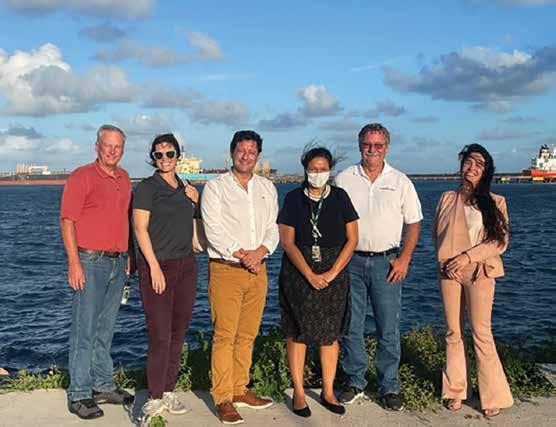
implement similar high blend levels within our respective fuel infrastructures, and this mission provided value on the various pathways to achieve such success,” said Mackenzie Boubin, USGC director of global ethanol export development.
Brazil has historically been a top three ethanol export market for the U.S. industry reaching up to 480 million gallons during the 2016-17 marketing year. So far, in the 2021-22 marketing year, Brazil has imported nearly 99 million gallons of U.S. ethanol, making the country the fifth largest market for the U.S. commodity at this stage.
“The current pricing dynamics in Brazil are very favorable to U.S. product. The Council continues to promote the value of U.S. ethanol supply to compliment Brazil’s growing ethanol production and consumption, key in maintaining and growing U.S. market access to this vital trading partner,” Boubin added.
Establishing and maintaining strong relationships with key stakeholders in major export markets will be critical to the continued expansion of biofuel usage. Additionally, long-term efforts such as shaping policy by engaging with relevant government bodies and studying the overall structure of a country’s logistics to adapt new strategies are an essential focus of the Council’s work.
The Council’s use of regional experts, connections with foreign buyers and robust training and information programs aims to consistently position U.S. producers at the forefront of global trade.
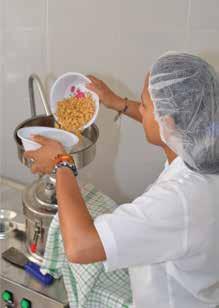

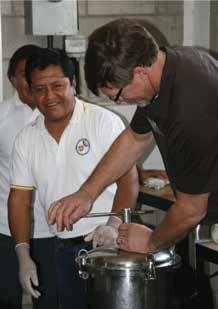



An Indiana farmer is moving up the ranks of an organization dedicated to expanding markets for U.S soybean growers in developing countries.
Craig Williams, a row-crop and melon producer in southwestern Indiana, was elected Secretary of the Executive Committee for the World Initiative for Soy in Human Health (WISHH) program. The program is under the umbrella of the American Soybean Association.

Williams, 53, is in his second term as a member of the WISHH committee but as secretary will serve for the first time at the executive level of the committee. He’s also wrapping up his third and final term as a member of the Indiana Soybean Alliance (ISA) board. Williams is the board director from District 3.
Craig Williams, a rowcrop and melon producer in southwestern Indiana, was elected Secretary of the Executive Committee for the World Initiative for Soy in Human Health (WISHH) program.
WISHH Executive Director Gena Perry said not everyone likes working in developing countries; but Williams during his visits to places like Africa and Asia, has shown a great deal of enthusiasm for it. Perry said he also offers great ideas for getting countries with emerging economies into a position to import more U.S. soybeans.
“He’s going to bring a lot of knowledge and background into what we do,” she said.

After receiving a bachelor’s degree in agricultural economics from Purdue University, Williams returned to
his family’s 600-acre farm in Oaktown, which is between Vincennes and Terre Haute. Through the years, he has added 1,800 acres to the farm.
With help from his father, Williams raises yellow corn and white corn used in foods like tortilla chips. He also produces commercial soybeans along with soybean seed for Pioneer Hi-Bred International where he’s been employed full-time as a sales representative for more than 20-years.
Tomatoes, sweet corn, watermelon and cantaloupe are also raised on the farm close enough to the Wabash River for it to be a source of water for irrigation.
“We are fairly diversified. Dad kind of instilled that in me when I was younger,” he said.

Williams and his parents still live on the farm about a quarter mile away from each other.
WISHH works strictly with developing countries showing promise to become more of an importer of U.S. soybeans. Food companies in those countries are educated about the variety of uses for soybeans and how soybeans would be a better source of protein than what’s used now in making their products.

Instruction is also provided on investing in the equipment
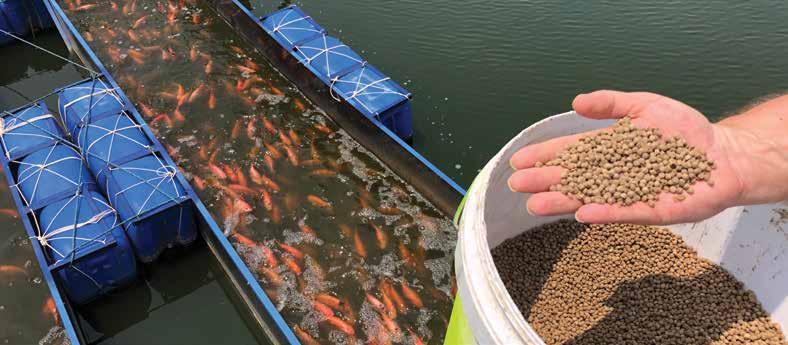
needed for turning soybeans into meal and other edible ingredients.
Williams said it can take years to get a return for U.S. soybean producers on the investment in growing markets struggling with poverty. However, he said it doesn’t take nearly as long to begin reaching people in those foreign lands challenged by hunger with a good source of protein.
“That’s the part of it I kind of enjoy,” he said.
One of the current WISHH projects he’s most excited about is in Cambodia where research is being conducted on using soy meal as feed stock for fish farmers. Researchers believe soy feed could improve the quality of fish while reducing pollution the food used now causes in the water.
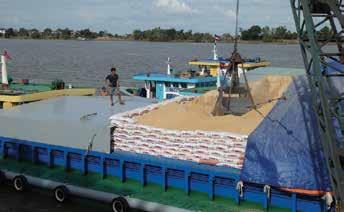
“That’s one that’s been kind of at the forefront for the last couple of years for us,” he said.
Williams also spoke highly about his visit several months ago to a Rhode Island company using soybeans from the Midwest to make ready-to-eat products.
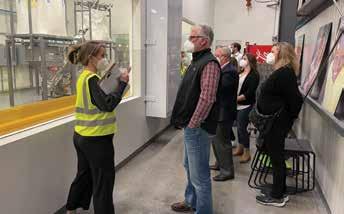
He said the federal government buys the soybeans and gives the food rolling off the assembly lines to starving children at refugee camps across the globe.
His first meeting as secretary of the WISHH executive committee is in December.
The WISHH board is made up of members from the Indiana Soybean Alliance and other soybean organizations from participating other major soybean producing states like Ohio, Kentucky, Illinois and Iowa. WISHH, based in St. Louis, Mo., is funded in part by the United Soybean Board and state checkoff programs.
Williams said he quickly learned that checkoff dollars from growers were in good hands after first taking his seat on the ISA board. He said the board is wise in making decisions on spending and works hard at making sure growers benefit from their checkoff dollars.
“They’re penny pinchers,” he said. “They want a good return for their investment.”
ISA receives the money from a .005-percent assessment on the net market price of soybeans farmers sell to the first purchaser. Checkoff assessments collected by Indiana first purchasers must be remitted to ISA by the last day of the first month following the end of the quarterly sales period.
The funds are used to sustain and grow demand for soy beans through methods like marketing and research under the Soybean Promotion Research and Consumer Informa tion Act establishing the national checkoff program in 1990.
Williams said a lot of his work with ISA involved educating consumers on things like where their food comes from and the work involved in getting the products to their dinner tables.
He said the common threads he shared with board members and the amount of expertise involved in deciding where to invest checkoff dollars were most surprising about his ISA experience.
“It was real eye opening,” he said. “It was refreshing when I first got there to see that it’s basically a board of fellow farmers like myself.”
Oaktown, Ind., farmer Craig Williams, a director on the Indiana Soybean Alliance board, participated in WISHH’s “U.S. Soybean Growers Take Action for Global Food Security” dialogue in Rhode Island
Edesia is the largest U.S.-based producer of Ready-to-Use Therapeutic and Supplementary foods. The Rhode Islandbased enterprise counts on U.S. soy – and works with WISHH – to supply protein for the majority of Edesia’s daily production of 1.5 million packets of soy-containing foods.
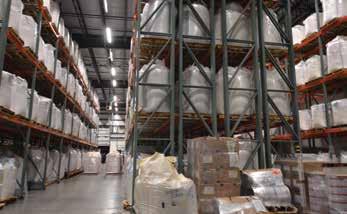




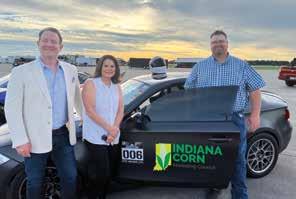
When it comes to spectator sports, not many events can match the vibrant colors, the unique sounds and the raw power of drag racing. All of that and more was on display at the Shift S3ctor Indy Airstrip Attack at the Marion Municipal Airport on Aug. 13-14 in Marion, Ind.
As a title sponsor for the event, the Indiana Corn Marketing Council (ICMC) touts higher blends of ethanol for the thousands of race fans at the race and millions of fans watching online. In fact, most of this year’s race drivers fueled up their cars with high-octane ethanol. Of the 286 cars that competed, 65 percent used E85 – a blended fuel with 85 percent ethanol. In the first race in Marion seven years ago, only 10 percent of the drivers raced on E85.
“Ethanol-blended fuels like E85 naturally have a high octane, which allow engines to operate at higher pressures enabling increased efficiency and boosting horsepower,” said ICMC President Paul Hodgen, a farmer from Roachdale, Ind. “The bottom line is E85 is a smart, environmentally friendly, renewable, low-cost fuel that supports our rural and local economy.”
corn each year, and those acres yield more than 900 million bushels. Indiana is the fifth-largest, corn-producing state in America. Nearly 50 percent of the corn grown in Indiana will be processed in one of the state’s 15 ethanol plants. Corn growers who work within 30 miles of an ethanol plant could realize an 18-23 cent premium per bushel on corn prices. At more than 1.1 billion gallons per year, Indiana is the fifthlargest U.S. producer of ethanol. Indiana produces nearly 8 percent of the total U.S. ethanol output.
Many ICMC partners participated in reception for industry stakeholders, farmers and race drivers the night before racing started. These sponsors include the American Lung Association, Casey’s, Dover Fueling Systems, Flex Forward, Greater Indiana Clean Cities, the Illinois Corn Board, Kansas Corn, the Kentucky Corn Growers Association, the Corn Marketing Program of Michigan, the Missouri Corn Growers Association and the Nebraska Corn Board.
Helping to make the racing weekend a spectacle for racers and race fans were, from left, Shift S3ctor co-founder Jason Huang, ICMC Biofuels Director Helena Jette and First Farmers Bank & Trust Senior Vice President Tade Powell.
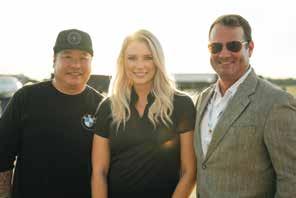
ICMC also promoted Unleaded 88, which is a 15 percent ethanol-blended fuel that can be found at nearly 100 retailers around Indiana. That number is increasing due in part to ICMC’s retailer-grant program. ICMC CEO Courtney Kingery said the state’s corn checkoff is committed to expanding consumers’ access to ethanol-blended fuels. “Sponsoring this event and promoting corn-based, ethanol-rich fuels such as Unleaded 88 is right on track with our mission,” Kingery said. “Ethanol is a leading market for Indiana-grown corn.”
She said Indiana harvests nearly 5 1/2 million acres of
Shift S3ctor racing features sports cars that might be found on the highway, such as Chevro let Camaros, Ford Mustangs and Dodge Vipers. But the event also showcases high-profile racing cars manufactured by Ferrari, Lambo rghini, MacLaren and Nissan GTR.
During the race on the half-mile airport runway, some of these cars can reach 200 mph. For more details about Shift S3ctor, go to their website at airstripattack.co
Shift S3ctor co-founder Jason Huang said the maximum numbers of drivers signed up to participate in this year’s race. “From a race weekend perspective, it was incredible. We were at max ca pacity in terms of race cars,” he said. “It was amazing to see that many cars come out to Marion. 95 percent of those cars were not even from the state of Indiana. These guys came in
from all over the county – Washington, Florida, New Jersey, Georgia, Cali fornia. To get that many people from all over the country into Marion was a real feat. I think we also had a very good turnout for spectators.”
ICMC board member Joshua Miller, a farmer from Anderson, Ind., raced in the Indy Airstrip Attack driving his Chevrolet Corvette powered by E85.



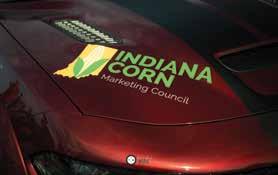
“Most people may not realize it, but farming and auto racing are very similar. Both are about innovation and taking risks,” said Miller, who hit a top speed of 139.02 mph. “In racing, innovations to the cars improve their performance, and taking risks can be the difference between winning and losing. In agriculture, we integrate new technology every year. If we don’t, then we risk not getting the most out of the crops we plant. Farmers also work to find new markets to improve the value of our crops. Unleaded 88 and ethanol-blended fuels are critical to the success of Indiana farmers.”
ICMC Biofuels Director Helena Jette said the state’s corn checkoff is in its fifth consecutive year of sponsoring Shift S3ctor’s Indy Airstrip Attack. She added that ICMC was happy to have co-title sponsorship with First Farmers Bank & Trust and to promote ethanol-blended fuels.
“Unleaded 88 is Engine Smart and Earth Kind,” Jette said. “Unleaded 88 is a naturally higher octane fuel that increases efficiency and boosts the horsepower of modern engines. But Unleaded 88 also burns cleaner than conventional gasoline leaving the air cleaner and easier to breathe. Unleaded 88 is the innovation while E85 needs to continue to be highlighted in fuels for our cars now and in the future. This is why we support Shift S3ctor’s Indy Airstrip Attack.”
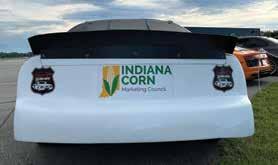
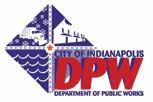
The B20 Club of Indiana, a collaboration between the Indiana Soybean Alliance (ISA) and the American Lung Association that recognizes and supports select Indiana-based fleets running on biodiesel blends of 20 percent or higher, recently welcomed the City of Indianapolis Department of Public Works (DPW) as its newest member.

Since September 2003, the City of Indianapolis DPW has been using biodiesel, a cleaner, renewable form of diesel fuel. Now, they have four B20 fuel sites and more than 1,500 of their vehicles run on biodiesel year-round.
“When we entered into an agreement with the State of Indiana to increase E85 and biodiesel usage nearly two decades ago, we purged all tank lines and filled them with B20,” said Bill Rogers, fleet administrator.
Since then, DPW has increased its biodiesel usage and championed the use of alternative fuels and technologies in its vehicles. “We’ve considered pretty much everything,” Rogers said. “B20 is our preferred fuel and is used in most of our trucks, but we also use liquefied petroleum gas (propane), E85, compressed natural gas and plug-in-hybridelectric vehicles.”
DPW’s use of biodiesel provides benefits to both Indy’s health and environment. Their use of B20 provides an estimated $1.7 million in annual health benefits and a carbon reduction equivalent to planting 27,211 trees every year.
“As a soybean farmer, we’re very excited about the potential of biodiesel,” said ISA Chair Jim Douglas, a farmer from Flat Rock, Ind. “Soybeans are a versatile crop with many uses. Each of these new uses adds value back to the farmer. The great thing about biodiesel is that it is a great product for the environment, and a great product for those who manage fleets of trucks, vessels and equipment operating on our roads, rails
and waterways.”
The City of Indianapolis DPW was recently named a 2022 Leading Fleet by Government Fleet magazine, in part because of their commitment to sustainable fuels. This awards program, co-produced with the American Public Works Association and sponsored by Ford Pro, recognizes operations that are performing at a high level, particularly in fleet leadership, competitiveness and efficiency, planning and overcoming challenges. The City of Indianapolis also was selected and received the Greater Indiana Annual Clean Fleet Leader award for 2021.
DPW joins the B20 Club’s growing roster of members including the City of Fort Wayne and the Muncie Indiana Transit System. “We’re proud to be part of the B20 Club,” Rogers said. “They’re a great partner for us as we continue to champion sustainable fuels in the City of Indianapolis.”
The City of Fort Wayne was also recently named a 2022 Leading Fleet by Government Fleet magazine. This awards program, co-produced with the American Public Works Association and sponsored by Ford Pro, recognizes operations that are performing at a high level, particularly in fleet leadership, competitiveness and efficiency, planning, and overcoming challenges.
“If you have your doubts about using biodiesel in your fleet, this is your sign to make the switch,” said Larry Campbell, Director of Fleet Operations at the City of Fort Wayne. “Many of the fleets we were up against for this award don’t use biodiesel which just goes to show you can run a fleet using biodiesel just as effectively while being kinder to the earth and the communities you run in.”
The City of Fort Wayne is a proud member of the B20 Club of Indiana.

“Making the switch to biodiesel
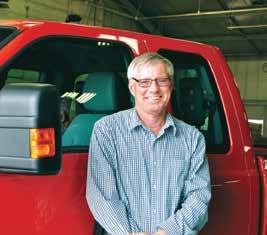
isn’t difficult or costly,” said Campbell in the B20 Club’s new video series. “If you’re already doing a maintenance program on your fuel tanks, it’s a drop-in replacement for petroleum diesel. It’s simple to do and needs no costly modifications.”
In a little more than a year, the B20 Club of Indiana has made a calculable impact through:
• 865 vehicles fueled with B20
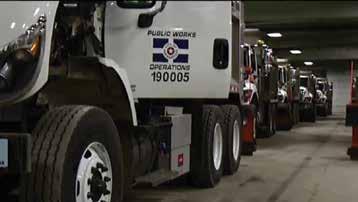
• 4.878 million gallons of B20 fuel used
• The equivalent of 138,408 trees planted
• 664 pounds of particulate matter reduced
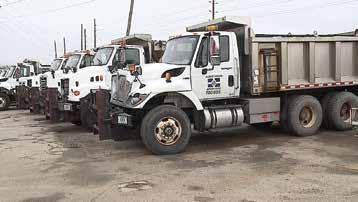
• $322,160 in health savings
“The benefits of B20 biodiesel are clear,” Helena Jette, Director of Biofuels at the Indiana Soybean Alliance, said. “It is a crucial component of green fleet technologies that boost the performance of diesel vehicles and since it is produced locally from renewable resources, like sustainable soybean oil, B20 biodiesel helps support all of Indiana while reducing greenhouse gas emissions by as much as 80 percent compared to petroleum diesel.”
For more details about how B20 helps the City of Fort Wayne reach its operational goals, watch the B20 Club’s new video series at b20clubindiana.org/members/city-of-fort-wayne/
Biodiesel boosts all of Indiana by reducing greenhouse gas emissions and improving air quality. It’s made from soybean oil and other renewable feedstocks produced in the state and lowers carbon footprints by reducing lifecycle carbon emissions.
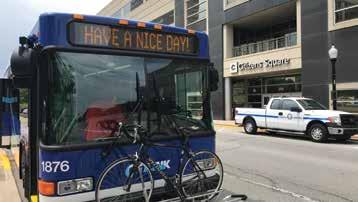
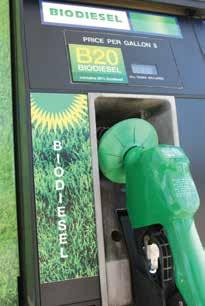
The city first started using biodiesel nearly two decades ago, and they now run 380 pieces of equipment on B20 – including fire trucks, snowplow trucks, specialist trucks such as sewer cleaners, sewer jetters, excavators, backhoes, pavers and all kinds of construction equipment.
Biodiesel boosts all of Indiana by reducing greenhouse gas emissions and improving air quality. It’s made from soybean oil and other renewable feedstocks produced in the state and lowers carbon footprints by reducing lifecycle carbon emissions. Biodiesel also improves air quality by drastically reducing particulate matter and other harmful vehicle emissions. B20 is a blend of 20-percent biodiesel and 80-percent conventional diesel.
“Many of the fleets we were up against for this award don’t use biodiesel which just goes to show you can run a fleet using biodiesel just as effectively while being kinder to the earth and the communities you run in.”Larry Campbell, Director of Fleet Operations for the City of Fort Wayne, said many of the fleets that were up against for the Leading Fleet award don’t use biodiesel. Campbell believes using biodiesel is effective while being kinder to the earth and the community. Since September 2003, the City of Indianapolis DPW has been using biodiesel, a cleaner, renewable form of diesel fuel. Now, they have four B20 fuel sites and more than 1,500 of their vehicles run on biodiesel year-round.


Biodiesel is accelerating the demand for Indiana soybeans and has boosted soybean farmers' income by $36 per acre. Indiana Soybean Alliance puts checkoff dollars to work by promoting and expanding the availability of biodiesel in local farm communities.


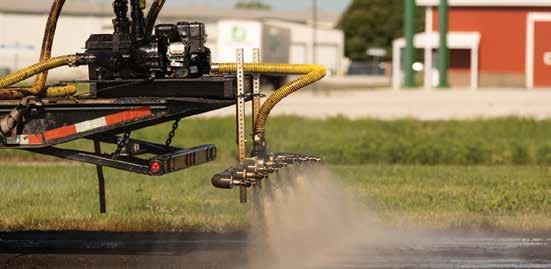
U.S. soybean farmers attending the 2022 Farm Progress Show had the opportunity to experience the value of their soy checkoff investments in research and development firsthand. An installation of more than 42,000 square feet of soy-based asphalt, sponsored by the Iowa Soybean Association (ISA), was completed at the Central Iowa Expo Grounds near Boone, Iowa, just in time for the event.
As high oleic soybean acres continue to increase, more end users are realizing the intrinsic value of this soybean variety and the corresponding added value it brings to a range of products, including asphalt.
“Our goal in funding this project is to highlight the diversity of high oleic soybean oil and its potential for use in pavement, coverings and coatings,” said April Hemmes, United Soybean Board (USB) farmer-leader and District 2 director for the Iowa Soybean Association.
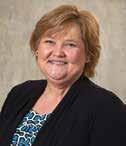
“The soy checkoff’s partnership with the Iowa Soybean Association and Iowa State University is an example of how we make checkoff dollars go farther to bring products like this to the market. USB has invested in this work since 2017, so it’s very exciting to see it come to fruition because we are going beyond petroleum to reach a new level of renewability and sustainability.”
The soy-based asphalt surface demonstrates the versatility of U.S. soybeans and research advancements toward their use. The binding agent, developed with high oleic soybean oil, increases asphalt durability and offers a more environmentally sustainable alternative to traditional binding agents.
“Infrastructure and demand are two priorities for Iowa soybean farmers,” said Robb Ewoldt, ISA president and soybean farmer from Davenport. “Soy’s incorporation in asphalt enhances the product’s durability and longevity and reduces maintenance costs. It also increases demand for soybean oil, improves the
product’s environmental footprint and provides the expo grounds with greater flexibility in the events it attracts and hosts.”
The paving project is an extension of the research conducted by Iowa State University into the formulation of high oleic soybean oil as a replacement for other compounds commonly used in the creation of asphalt products. Using a cold in-place technology, the project combines 100% recycled asphalt pavement mixed with a soy-based polymer.
“Site improvements that also highlight the versatility of crops produced by Iowa farmers is a win for all,” said Matt Jungmann, events director of the Farm Progress Show. “We’re creating an enhanced experience for visitors by upgrading the Varied Industries Tent area with this asphalt. Farmers and exhibitors will find this new surface creates a better environment for the show.”
In total, the construction utilizes more than 2,300 pounds of soybean oil, or 215 bushels of soybeans. On average, each soybean bushel yields nearly 10.7 pounds of oil.
The Iowa Soybean Association is proud to invest in the research and technology to make soy-based asphalt a reality, added Ewoldt. “Featuring soy in such a prominent location will advance awareness and understanding of the product’s versatility and benefits, drive demand for homegrown soybeans and make the expo grounds more accessible for guests for years and decades to come,” he said.
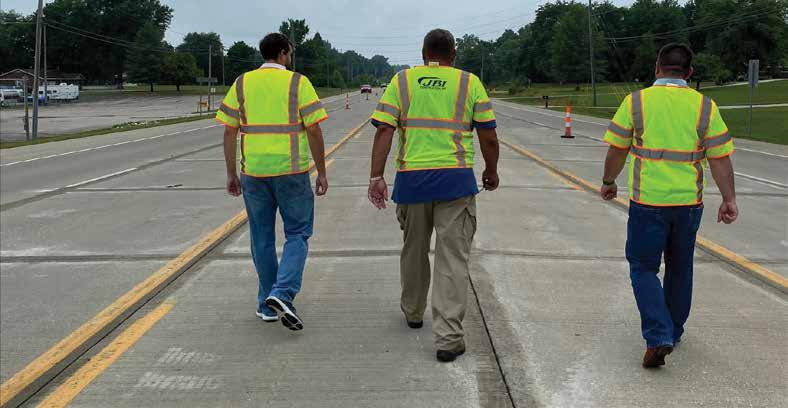
Astrong, reliable infrastructure is key for efficient transportation of crops like corn and soybeans across the country. What’s even better for U.S. farmers is when the material keeping roadways strong is made from soybeans. PoreShield – a concrete durability enhancer made from soy methyl ester-polystyrene – has been contracted for use in its biggest project to date by the Indiana Department of Transportation as part of the State Route 62 repair project.
In the Midwest, the road salts applied to roadways in the winter cause calcium oxychloride to form in concrete. This compound continues to expand, even in the summer months, putting pressure on concrete pores and causing cracks, holes and other deterioration.
PoreShield is a sustainable solution that takes a different approach from its competitors.

“PoreShield is unique in the way it behaves from the beginning,” PoreShield Technical Lead for Indiana Soybean Alliance Paul Imbrock said. “It’s absorbed deep into the concrete rather than coating the surface.”
PoreShield provides a different mechanism of protection to the surfaces on which it’s applied compared to similar products. Because PoreShield’s viscous, hydrophobic material moves and forms into the pavement to fill in cracks as they form, rather than sitting on top of it, damage to the surface of the concrete won’t affect the
PoreShield application like it would other products.
Currently, the Indiana Department of Transportation (INDOT) is using PoreShield to treat more than 10 miles of roadway on State Route 62. This is the largest INDOT project in which PoreShield has been used, with more than 5,500 gallons of PoreShield being applied. This is also the first full-scale project where PoreShield is applied across the entire roadway as opposed to a bridge deck or smaller surface area.
In most cases, state departments of transportation require a series of steps to be taken before a product is cleared to be used in a state roadway repair project. This process includes product approvals, demo projects and integration into the overall design process.
The State Route 62 project is a unique situation, Imbrock said, because INDOT was part of the initial PoreShield research that led to the product patent. “PoreShield was developed to meet a real need that INDOT had identified on concrete pavements,” Imbrock said. “It’s nice to know they have faith in the research they’ve put forth, and they’re using it in a pretty big way now.”
The State Route 62 project is currently in a state of special provisions – a process of developing specifics and provisions for other contractors to follow in order to be compliant with
the manufacturer’s instructions for using a product. Imbrock said this step is necessary for any product that is intended to be distributed for standard use and is used to help contractors get the desired quantity of product needed for a particular project to a job site.
Gary Fox, construction area engineer for INDOT, said that future uses of PoreShield will be determined based on the performance and durability of the application used in the State Route 62 project. He said products like PoreShield align with INDOT’s goal of improving Indiana’s infrastructure and maximizing the life of the state’s jointed concrete pavements.
“INDOT continually evaluates products like PoreShield that aid in taking care of our infrastructure and providing value for taxpayers,” Fox said.
PoreShield is gaining attention from state departments of transportation like INDOT for a number of reasons. Because PoreShield increases durability and extends the life of concrete, it preserves tax dollars that would typically be spent on additional repairs.
Using PoreShield also saves costs on time and labor as it’s more efficient to apply and requires fewer crew members per project. Because PoreShield sinks into the concrete and fills in holes and gaps as they’re created, it also extends the life of the concrete, which means less repairs are needed for maintenance.
When working with a product like PoreShield, finding the right contractor partners to perform the application is key for developing relationships for future projects. For the State Route 62 project, JBI Construction, based in Evansville, Ind., was selected for the job.
Imbrock said working with contractors on PoreShield projects is mutually beneficial.
“Once they have the first project down, they really seem to like it,” Imbrock explained. “Because it’s made from soybeans, PoreShield creates a safer environment for workers. This product is very low hassle and easy to apply.”
Typical pavement treatments are applied using a backpack sprayer connected to a truck, but JBI Construction developed a custom applicator for the State Route 62 project, allowing a one-man operation to quickly treat PCCP joints on miles of highway.
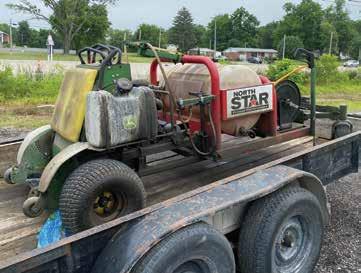
With the increased support of PoreShield by state departments of transportation and contractor partners ultimately comes increased demand for U.S. soybeans. In fact, for every one mile of concrete bridge treated with PoreShield, 400 bushels of soybeans is used in that application. Farmers are forward thinkers who are looking beyond the current growing season to plan for a thriving, viable future for their farm.
The Indiana Soybean Alliance seeks to help farmers in
their mission for a successful tomorrow. Uses for soy have expanded well beyond the traditional uses of food and feedstock. Solutions like PoreShield help U.S. soybeans break into new market categories, which ultimately means more demand.
Not only do Indiana farmers benefit financially and economically from PoreShield projects like the current State Route 62 project, but they also get the benefit of stronger infrastructure for transportation. Having stable, reliable roadways and bridges is important as farmers navigate between fields in-season and transport their crops to the elevator during harvest.
Imbrock noted this added benefit of PoreShield, saying that it helps increase efficiency for farmers as they transport their crops.
“If you have to go five miles out of the way to get your beans to the elevator, that’s a great cost and inconvenience,” Imbrock said. “Not only do Indiana farmers benefit from having another avenue for their soybeans to be used, but they’re also reaping the benefits of PoreShield itself through improved infrastructure.”
Partnering with state departments of transportation like INDOT creates a number of opportunities for the use of PoreShield to expand through additional projects within a state as well as projects in other states. Imbrock said he is looking forward to seeing where PoreShield is used in the future.
“I’m excited to see the Department of Transportation project in Indiana take off and see increased use in other states on bridge decks,” Imbrock said. “As state and local agencies use PoreShield for a wider variety of applications, it adds a lot of credibility and increases opportunities for other projects.”
For more information about PoreShield, visit PoreShield.com.
PoreShield’s viscous, hydrophobic material moves and forms into the pavement to fill in cracks as they form, rather than sitting on top of it.



Innovating new uses for soybeans opens new markets, which in turn builds more value.
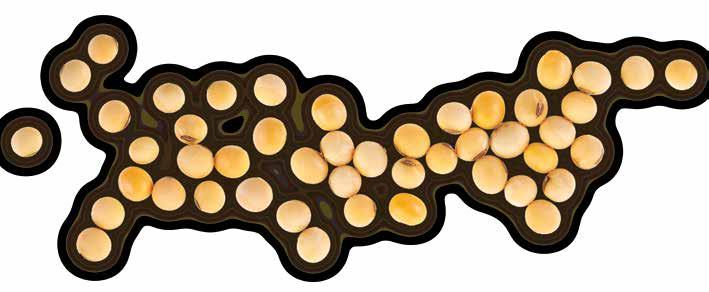
ISA is actively working to drive commercial awareness of a new soy products including new PoreShield technology, which is a soy-based concrete durability enhancer. When applied to the roads, PoreShield uses 200 bushels of soybeans per 2-lane mile of highway joint.

See how we're protecting infrastructure with soybeans at Indianasoybean.com.

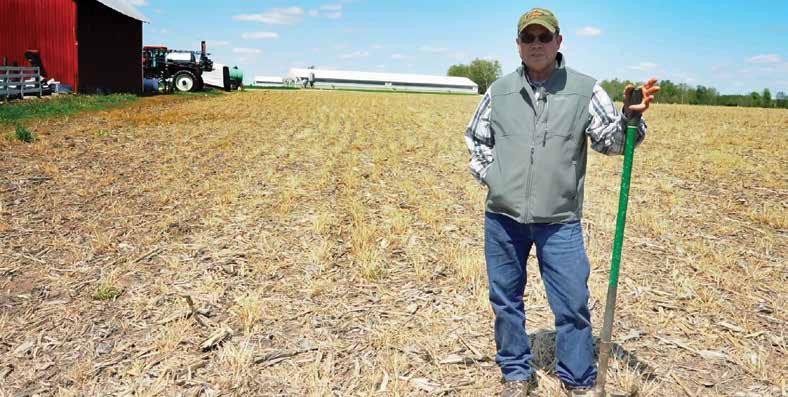 BY ANN HINCH
BY ANN HINCH
GREENCASTLE, Ind. — When government regulations for agriculture are on the horizon, farmers can resist or abide by the new rules. There are those who go so far as to turn compliance into leadership, though, with either their own best farm practices or knowing which neighbors to wisely emulate.
In 1985, Congress passed a farm bill with a conservation title that tied payments for price supports, farm storage, crop insurance, disaster reimbursement and more to requiring farmers to institute certain conservation practices if farming on highly erodible land. The bill included increased use of no-till.
Putnam County is comprised of many acres of highly erodible farmland. In 1987, Barry Fisher came to the local USDA Natural Resources Conservation Service (NRCS) office as district conservationist. Mark Legan, a Coatesville farmer and current board member and Market Development chair for the Indiana Soybean Alliance (ISA), was the county’s extension agent at that time. His wife, Phyllis, served on the Soil and Water Conservation District (SWCD) board.
“We’re a small crop farm,” Legan said, “but we try to do what we can to remain a part of (conservation efforts).”
This month, in fact, he hosted a lunch-and-learn on his farm for ISA and Indiana Corn Marketing Council (ICMC) members, focused on conservation and sustainability
programs. At this event, Joe Rorick, who is ISA and ICMC’s On-Farm Sustainability Research and Project Coordinator, took a break from presentations to talk about how Fisher and Legan have been expanding conservation farming practices in Putnam County.
“What Mark and Barry and that group have done over these years – they just kind of all got together over breakfast,” he said of the informal roundtables Fisher helped start 35 years ago. “There need not be any big official thing; this can just be a group of friends or a group of people who are going to become friends, getting together to learn from each other.”
“Putnam County has sort of always preached their own conservation for farmers, and Barry took that and ran with it,” Legan said. What Fisher did was facilitate roundtable discussions for local producers. “I was just a participant. I didn’t have anything to do with setting them up,” he explained.
“We put together a pretty targeted education and information campaign with all the ag agencies,” Fisher recalled, explaining the NRCS and other ag offices and groups decided to pool their expertise and resources rather than duplicating efforts. “We would have regular workshops
and field days and things – but a big part of it was these roundtable networking meetings,” Fisher said.
In the beginning, organizers tried to arrange a meeting once a month in different parts of the county and bring in crop or extension specialists from Purdue University or other sources to talk or demonstrate on topics such as weed control, planter setup, starter fertilizer and more. The meetings included retail ag and equipment owners, who hosted some meetings at their stores and invited customers, as well as sponsoring speakers and refreshments. “If everybody’s sitting at the same table when the information is being shared or the education is being gained, it just makes success a lot easier,” Fisher said.
The meetings evolved into small networks of farmers, effectively crowdsourcing knowledge about what methods worked and what didn’t, he said. Some farmers would share on-farm inventions with others.
“When you decide you want something to work, that’s half the battle,” Fisher explained. “Then we figure out how to make it work.”
He described his role in this county conservation effort as mostly getting farmers together and letting their natural innovation take over with some directed help from ag specialists and research. One early example was trying to figure out how to manage manure application in a no-till environment. The group of farmers decided to work with a local contractor and swine producers on a way to apply injected hog manure in fields.
“A lot of (innovation) was equipment-related,” he said. “At almost every meeting, someone would come to the table with some new practice or product – for planting, weed control, water use or even a discovery on better burndown of cover crops.”
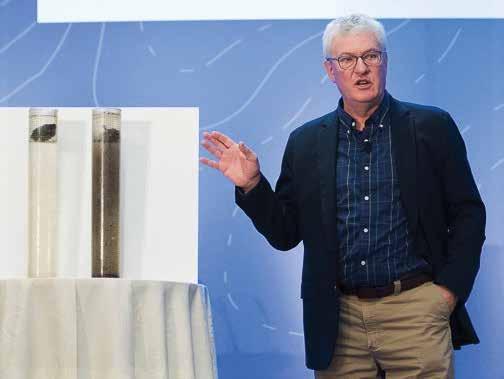
And it wasn’t just farmers being educated. Even when specialists gave presentations, he said, they usually picked
up something new to take back to researchers and other specialists to show what was needed in real-world situations.
“The key to making this sort of thing work is for someone to take the lead on it,” Legan said, “and Barry took the lead on this” with his “passion to make it work.”
Fisher acknowledged anyone being forced to comply with new regulations may want to dig in their heels and not change. He said, “We keep doing what we survived doing last year, so there’s a natural instinct you’re working against” to make a change such as disrupting generations of tillage tradition.
“The bottom line is, we were solving a problem” – and farmers are more likely to adopt a practice if it solves a problem. Fisher said it’s also good to recognize those efforts publicly, such as the “Pride of Putnam County” awards and signs on farms that helped spread acceptance of new practices.
Legan noted local farming can be a competitive business, but when it comes to conservation and sustainability, buyers and end consumers want to know there are standards everyone is using. And if growers are willing to share knowledge with each other, they may find they can raise corn and soybeans less expensively while improving soil health.
“It’s got to be good for the bottom line, too,” he said.
Putnam County isn’t the only place where this sort of effort has worked, but it’s a good example of how to begin.
Fisher, who retired last year after 39 years with NRCS and whose last position was central region leader with its Soil Health Division, providing training and leadership for farmers and other ag stakeholders across several states, observed there are farmers who have created networks in other locations. They really benefit from having a local agency or group to assist, with office resources for meetings and contacts for lining up speakers and demonstrations.
Indiana has the Conservation Cropping Systems Initiative, which promotes scientific
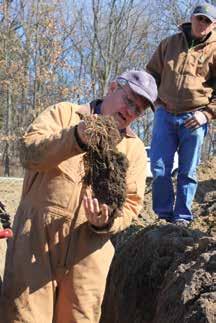
and farmer-proven soil health practices through grassroots leadership. Fisher said the CCSI helps with setting up meetings and networks, but relies on local leaders with the technical knowledge and contacts to know what education is needed and who will be those local shepherds.
These days, Legan said the educational meetings and demos don’t take place quite as frequently as they once did in Putnam County, but that’s because farmers have smaller networks and can communicate frequently without formal meetings. Fisher, who has a small farm there in addition to his consulting business, Fisher Soil Health LLC, said using cover crops now has almost become the new normal the same way no-till has evolved there.

Two broader conservation efforts going on right now in Indiana are the Upper White River Watershed Cover Crop Program and INfield Advantage. Rorick is an agronomist with CCSI, whose office is at Purdue; last year, ISA and ICMC made an agreement with the university to use his expertise on soil health and ag conservation practices as their Soy/ Corn On-Farm Sustainability Programs and Research coordinator.
The Upper White River Watershed Cover Crop Program is regional, stretching north from Martinsville to Tipton, then east to Winchester, through at least part of 16 counties in central Indiana. Rorick said ISA and ICMC coordinate the aerial application of cover crop seed for farmers who participate. Researchers come to the farm for two soil fertility and basic cover biomass samples.
Then there’s INfield Advantage, which is a little more involved. Cover seed is delivered to a farm where the grower plants it themselves. Researchers collect more detailed data through soil tests, tissue samples and soil health assessments. Participants must first be eligible for the federal Environmental Quality Incentives Program (EQIP).
“Both programs are settled around (the type of thing) Mark and Barry have done for years, and we hear and we see that over and over in the social data as well, that farmers want to
learn from other farmers,” said Rorick, adding ISA, ICMC and Purdue Extension are looking for other ways to foster more peer-to-peer networks around the state.
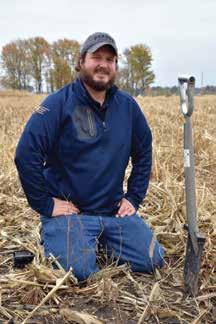
“There’s a lot of work out there on who farmers’ trusted advisors are, and at the top every time is other farmers.”
Again, these efforts are more about providing expert guidance to local networks of growers. Organizing “does not have to be a big, complicated thing with an agenda; it can just be a group of people gathered around a plate of biscuits for breakfast, or whatever.”
Farmers wanting a local network, who don’t know where to begin, can consult with their local Extension office, SWCD or NRCS for direction how to start with the Indiana Conservation Partnership’s help. Fisher’s advice for taking part in any sort of peer network is to keep an open mind in this sort of process and consider all points of view, even those with which you disagree.
“You can’t think, ‘That’s bad information,’” he explained, adding such data may still come in handy later.
Legan said it’s also good to get comfortable with the idea of sharing failures as well as successes, since both are instructive. “You’ve got to have a group that’s willing to share,” he said. “It’s give and take, not just taking.”



Growing more and better beans increases our bushels for the marketplace. Working with the Indiana Corn and Soybean Innovation Center, Purdue University, the University of Notre Dame, Indiana University and farmers themselves, the Indiana soybean checkoff invests in identifying solutions for environmental stressors, weeds, pests and input use and costs — all driving toward improved production and improved farm profitability
For every dollar invested in research, $18 returns to the farm.* See research at work at Indianasoybean.com.




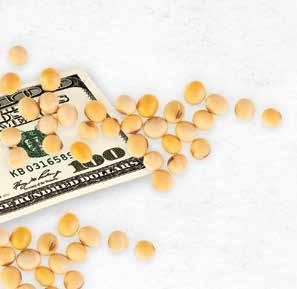
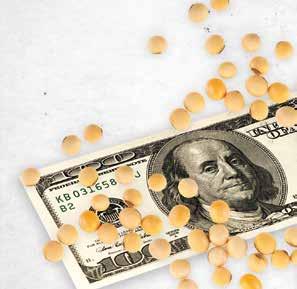







 BY DR. JIM CAMBERATO, Professor of Agronomy AND DR. DAN QUINN, Assistant Professor of Corn Production
BY DR. JIM CAMBERATO, Professor of Agronomy AND DR. DAN QUINN, Assistant Professor of Corn Production


To minimize the loss of nitrogen (N) from fall-applied anhydrous ammonia (AA), seal the application slot, avoid applications on poorly drained (heavy textured and wet) or excessively well-drained soils (sandy soils with low water-holding capacity), wait till soil temperatures approach freezing, and use a nitrification inhibitor.
First things first, it is important to get a good seal on the application slot to avoid direct loss of ammonia to the air. Slot closure can be difficult when soils are either sopping wet or bone dry. If you can smell ammonia, slot closure is likely poor, and N is being lost – this is especially troubling if you can still smell ammonia several days after application.
Ammonia that is trapped in the soil after application can be lost later by two mechanisms. On poorly drained fields, nitrate-N produced from ammonia can be lost to the air when soils are saturated. On excessively well-drained fields, or tile-drained fields, the ammonium-N and nitrate N produced from ammonia can be leached below the rootzone with excess rainfall.
freezing.
In the northern half of Indiana, this could occur anywhere from the last couple weeks of October to the first couple weeks of December. Fall application of AA south of Interstate 70 is discouraged due to warm and fluctuating soil temperatures throughout the winter which can increase N loss risk.
A nitrification inhibitor, such as nitrapyrin, is an N fertilizer additive that slows the activity of microorganisms that convert ammonia to nitrate N, thus reducing the loss of N from fall-applied AA. Consider using a nitrification inhibitor if you fall-apply AA. Guidance on effective nitrification inhibitors can be found in the bulletin titled Nitrogen Extenders and Additives for Field Crops.
Jim Camberato Dan QuinnFields with optimum drainage result in lower N loss than those that are poorly- or excessively well-drained. Nitrogen losses can occur throughout winter, but the greatest losses occur in spring when soils warm up and the ammonium-N is converted to nitrate-N and soils are ponded or tile drains are flowing.
Delaying AA application until soils become cold is important because soil micro-organisms convert ammonia to nitrate-N much more slowly as temperatures approach 32-degrees F., where conversion of ammonia to nitrate-N stops. The less nitrate-N produced, the lower the chance of N loss. The standard advice is to wait till soils at a 4-inch depth are consistently below 50-degress F. and soil temperatures are expected to continue decreasing toward
The amount of fall-applied N that is lost is hard to predict, due to N loss being affected by both weather and soil properties. Losses of N can be minimal in some situations or substantial in others – 15-30 percent of the applied N or more. Measuring what N remains is just as difficult as predicting loss, because of the unknown distribution of ammonium-N and nitrate-N in the soil which move both vertically and horizontally from the injection zone.
Therefore, intensive sampling is needed to estimate the amount of N remaining. Bottom line is there is quite a bit of uncertainty come spring whether the crop will have the N it needs, and farmers are often faced with the difficult decision of whether to apply more N. This is the reason we recommend moving away from fall N and apply AA in spring or side-dress AA or liquid N, such as 28 percent UAN.
Lastly, whenever you apply AA remember those practices necessary to keep everyone safe when handling, transporting, and applying AA. Dr. Fred Whitford gives safety guidance in a recent publication that can be downloaded from the internet or ordered in printed format.
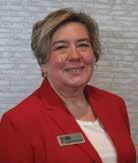
The enrollment period is now open for farmers interested in participating in the Soil and Water Outcomes Fund. Rather than provide farmers payment for practice implementation, the Soil and Water Outcomes Fund provides payment to farmers for the multiple environmental outcomes of new conservation practices implemented on their farms. These outcomes include water quality improvements and carbon sequestration.
“The unique aspect of this program is that it focuses on the outcomes of the soil and water conservation practices,” said ISA board member Anngie Steinbarger, a farmer from Edinburgh, Ind. “This is another opportunity for farmers to receive a payment for taking care of their own land. I encourage farmers to look into this.”
Applications for enrollment should be submitted before new practice implementation. The enrollment will be closed once the 10,000-acre limit is reached.
The eligible region for enrollment includes 49 counties in central and southern Indiana. Farmers in the following Indiana counties are eligible to enroll: Bartholomew, Brown, Clark, Clay, Crawford, Daviess, Dearborn, Decatur, Dubois, Fayette, Floyd, Franklin, Gibson, Greene, Hamilton, Hancock, Harrison, Hendricks, Henry, Jackson, Jefferson, Jennings, Johnson, Knox, Lawrence, Madison, Marion, Martin, Monroe, Morgan, Ohio, Orange, Owen, Perry, Pike, Posey, Putnam, Ripley, Rush, Scott, Shelby, Spencer, Sullivan, Switzerland, Union, Vanderburgh, Warrick, Washington and Wayne.
The Soil and Water Outcomes Fund is a partnership of AgOutcomes, a subsidiary of the Iowa Soybean Association, and ReHarvest Partners, a subsidiary of Quantified Ventures. The Fund advises farmers to tell them what practices they would like to implement; then, the Fund will estimate the environmental outcomes. Once the outcomes are verified,
farmers will receive a payment from the Soil and Water Outcomes Fund.

These environmental outcomes are then sold by the Soil and Water Outcomes Fund to beneficiaries including corporations seeking to offset greenhouse gas emissions in their supply chain. Other buyers could include public entities such as municipal water utilities or state and federal departments of agriculture seeking to improve and safeguard water quality.
While the Fund is not prescriptive about the conservation practices that farmers can implement, those who participate typically implement the following practices:
• No-till or reduced tillage
• Cover crops
• Extended crop rotations
These practices enhance financial resiliency on a farming operation through diversified revenue streams and promote ecological resilience through improvements in soil health.
“Farms are disappearing right before our eyes. Something’s got to change,” said Lance Lillibridge, an Iowa farmer and a Soil and Water Outcomes Fund participant. “My field- that’s my retirement. That’s my 401(k). I’m taking the best care of it that I can, because someday I’ll need it to take care of me.”
Farmers and landowners in counties across 10 states are now eligible to enroll acres in the Soil and Water Outcomes Fund. In addition to Indiana, these states include Delaware, Illinois, Iowa, Maryland, Missouri, New York, Pennsylvania, Virginia and West Virginia.
ISA Sustainability and Value Creation Director Ben Forsythe said, the more practices a farmer includes, the higher outcome payment they can generate. Soil types and baseline practices affect the outcomes, so it is hard to consistently say what each practice yields for an outcome payment. At minimum, farmers will most likely need to use cover crops and either reduced or no tillage.
The contract is currently one year at a time. Farmers can re-enroll acres if they are willing to continue and include more practices. Farmers will receive half of the payment
in the spring to help with seed costs, etc. and the balance is paid during the winter after outcomes and practices are verified. There is not an acre cap per farmer.

Farmers who are currently no-tilling and using cover crops will still need to add at least one additional conservation practice. Forsythe suggested farmers break down their operation field-by-field and decide if there is a practice that can be added.
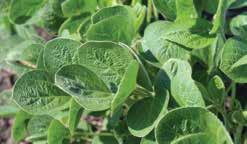
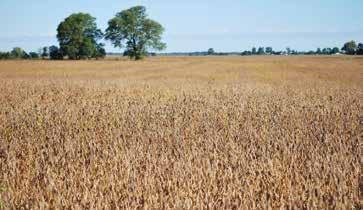
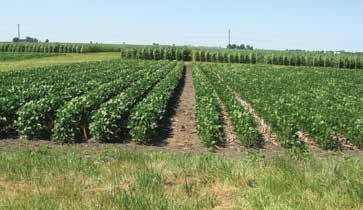
“Is 100 percent of your operation using no-till and cover crops?” Forsythe asked. “If not, the Soil and Water Outcomes

Fund should be a fit for the rest of your fields.”

Hoosier farmers who are only seeding a cover crop ahead of soybeans could also add it in front of corn.. Adding diversity to a corn and soybean rotation. would also be considered an eligible change.

For additional information regarding the Soil and Water Outcomes Fund or to enroll, visit www.theoutcomesfund. com/enroll or contact SWOF Conservation Agronomist Kevin Schabacker at 779-861-2979. Farmers may also contact Forsythe at bforsythe@indianasoybean.com

The farmer-leaders of the United Soybean Board (USB) convened for its summer board meeting on July 26-27 in Kalamazoo, Mich., to approve a 2023 fiscal year budget of $123 million for program work, starting Oct. 1. Spanning eight portfolios, these investments in research, education and promotion add value to U.S. soybeans with the goal to build resilience, differentiation and reputation.
This portfolio ladders up to USB’s new vision of delivering sustainable soy solutions to every life, every day. Investment portfolios will continue the board’s work of creating consistent, long-term domestic and global market opportunities to further demand for U.S.-grown soybeans.
“Our thinking, planning and work as a board has become a much more deliberate and idea-driven process, challenging our board members to think big. Each portfolio is farmerdirected and works together to create demand for U.S. soybeans across the entire global soy value chain,” said Ralph Lott, USB Chair and farmer from New York. “We’ve successfully shifted from project takers to portfolio makers, and the end result is more strategic thinking. The preference for U.S. soybeans grows while farmers continue to see strong ROI on their checkoff dollars.”
Investment portfolios are approved by the full board and consist of programs across Supply and Demand Action Teams driven by the three priority areas of:
• Innovation & Technology
• Health & Nutrition
• Infrastructure & Connectivity
The programs for Fiscal Year 2023 impact everything from improving production on the farm to expanding markets across animal agriculture, soyfoods and providing a renewable alternative for biofuels and nonfood uses. Some examples of these soy checkoff investments aim to:
• Enhance soybean cropping system improvement that creates opportunities to reward and support farmers and other value chain participants, including the growth of high oleic soybean production to meet demand for specialty soybeans while providing a farmer premium.
• Further soy’s role in the evolving clean energy movement, with investments that support using soybean oil as a feedstock for biodiesel and renewable diesel in marine, rail and on-road applications. Biofuels are the largest industrial use for soybean oil and require investments to reach maximum potential.
• Develop nutrition and health research that distinguishes U.S. soybean meal’s value drivers (amino acids and energy), supports animal health, builds evidence that discerns U.S. soybean meal from the competition and strengthens key industry partnerships.
• Encourage partnerships to improve soil health, collaborating with National Corn Growers Association and National Pork Board to implement cover crops on 30 million acres of soybeans and corn by 2030, focused on meeting sustainability goals while improving farmer productivity.
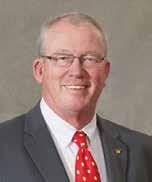
• Grow exports in more than 80 countries through the U.S. Soybean Export Council’s strategy to differentiate U.S. soybeans in the global marketplace. USB also partners with the U.S. Meat Export Federation and the USA Poultry and Egg Export Council to promote exports of soy-fed meat, as well as the American Soybean Association’s World Initiative for Soy in Human Health to create long-term demand for U.S. soybeans in emerging markets and improve food security.
• Increase focus on fertilizers and biologicals that support farmers and farming system resilience in an uncertain crop input market environment.
• Improve best management practices through partnerships that lead to faster, real-time dissemination of pest and disease research findings, such as
developing a pesticide and fungicide calculation tool that helps farmers determine regional application thresholds to maximize yield potential.
• Reach key audiences to elevate the reputation of U.S. soybeans, expanding trust with consumers and helping them develop a deeper understanding and appreciation for how U.S. soybean farmers can deliver sustainable solutions for more than 1,000 renewable products on the market.
“Over the past year, we’ve changed the way we make investment decisions. The new Value Alignment Committee gives farmer-leaders more input in the types of programs the checkoff supports. Today marks the culmination of that new process,” said Meagan Kaiser, USB Vice Chair and farmer from Missouri. “This is a new, exciting direction, and we couldn’t be successful without our state and national farmer volunteers and checkoff partners who work diligently on behalf of the 515,000 U.S. soybean farmers. I also want to extend thanks to the Michigan Soybean Committee for hosting this memorable meeting and showcasing the diversity of Michigan agriculture.”
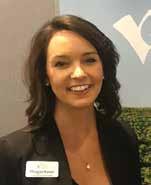
 BY MATT KELLER
BY MATT KELLER
The 2022 Indiana State Fair was a fantastic success and, as has been the case for nearly a decade, the Indiana Soybean Alliance was tops among the highlights for visitors with the Glass Barn.
Last year, ISA installed a life-sized combine simulator in the facility, which was an instant hit for the visitors. For an encore, the organization upgraded multiple exhibits this year, and the improvements were noticed and lauded.

One of the upgraded exhibits was a retro-refresh of the popular “Soy You Think You Can Farm” video game. Visitors were able to virtually plant soybeans, use drone technology to identify and protect the crops from weeds and pests, then harvest the soybeans to determine how many families may have been fed through their efforts. The renovation was com plete with a high-score screen and a QR code for a mobile version so that guests could play on their phones for free.
The Bean Market area was revamped this year as well and received numerous kudos from those who played the new “Soy Market Spree” interactive grocery game. The game gives visitors a randomized shopping list for places where
they might find soy-based products.
Then, the individuals would have to pore through a large rotating bin of items to find the right products to scan and fill their list within the 60-second time limit. For example, a visitor may have to find all the items that would be used at a birthday party. They would have to then quickly find items in the rotating bin like soy candles, cake mix, ice cream, crayons, whipped cream or vegetable oil to fill the shopping list in time.
Another enhanced area of the Glass Barn for 2022 was the WeGrow Theater. Since its inception, the WeGrow Theater has been a place where farmers invite Glass Barn visitors in for a virtual visit of their operations. However, the content and tech nology had become a bit dated, and it was in need of new life.
With a new 4K video wall, custom-built benches, SynLawn soy-based flooring and a beautiful new podium, visitors were able to see expanded content and speak live with farmers, ag engineers, researchers and biologists, learning how soybeans are part of their everyday lives. They were also exposed to the myriad of career paths in agriculture that go
ISA’s
beyond the farm – something that is often overlooked when speaking to young people about ag.
Though there were many improvements to the Glass Barn this year, one traditional mainstay was the highlight for many fairgoers – playing BeanGo to win the famed Glass Barn Hat. This year 14,640 visitors played to win a hat, and they all learned about the history of farming, new uses of soybeans, modern ag technology, biodiesel, and more.
Next year will mark the 10th anniversary of the Glass Barn at the Indiana State Fair and there are more improvements in store. Until then, here’s a final look back at ISA’s consumer outreach during 2022 fair by the numbers.
• 96,893 visitors learned about soybeans and modern ag at The Glass Barn


• 14,640 visitors played BeanGo to win a hat
• 129 farmers attended the Farmer Appreciation Event
• 111 volunteers helped to staff the Glass Barn during the 18-day fair
The new “Soy Market Spree” interactive grocery game gives visitors a randomized shopping list for places where they might find soy-based products.
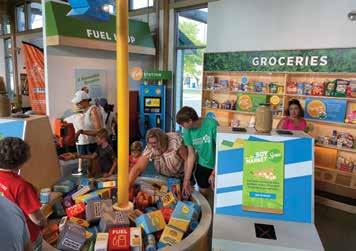
• 54 live chats featuring nine ag professionals took place covering biodiesel, soybean oil, new uses, ag tech and livestock
• 10 rides on the Midway carried signage about the rides being powered with biodiesel
• 9 of the FFA Pavilion putt-putt holes were covered in SynLawn turf and included information about soybeans on the flag stands
• 8 tractor shuttles running on biodiesel carried ISA and Glass Barn signage each day
• 7 food stands used High Oleic Soybean Oil
• 3 state fairs sent representatives to learn more about our Glass Barn in hopes to create something similar at their home fairs
• 1 State Fair Lifetime Pass was presented to United Soybean Board and ISA Director Kevin Wilson who was instrumental in the development of the Glass Barn
One of the upgraded exhibits was a retro-refresh of the popular “Soy You Think You Can Farm” video game. Visitors were able to virtually plant soybeans, use drone technology to identify and protect the crops from weeds and pests, then harvest the soybeans to deter mine how many families may have been fed through their efforts.

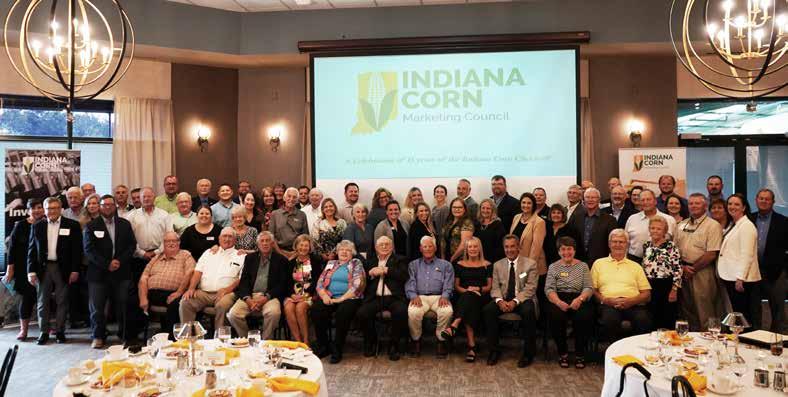 BY DAVE BLOWER JR.
BY DAVE BLOWER JR.
The Indiana Corn Marketing Council (ICMC), the state’s corn checkoff program, celebrated its 15th anniversary with a farm industry leaders, lawmakers and corn growers on Aug. 23 in Indianapolis.
In 2007, after years of debate in the Indiana General Assembly, then-Gov. Mitch Daniels signed the Indiana Corn Market Development Act into law; and thus, the state’s corn checkoff program was born. ICMC CEO Courtney Kingery said, in the 15 years since that moment, the farmer leaders and staff of the checkoff program have accomplished many goals for corn growers. These accomplishments include:
• Expanding Indiana’s ethanol industry from six plants in 2007 to 15 today.
• Creating environmental programs, such as INfield Advantage, to help farmers adopt environmentally sound farming practices.
• Investing in the Indiana Corn and Soybean Innovation Center at Purdue University establishing the first field phenotyping facility of its kind in the United States.
• Endowing two graduate scholarships annually awarded to Purdue grad students who are conducting research directly related to Indiana’s corn industry.
• Sponsoring the National Corn Growers Association’s (NCGA) Corn Utilization Technology Conference which is critical in bringing together the value chain interested in
developing new uses for corn.
“Without the corn checkoff law that was passed in 2007, none of these things would have been possible,” Kingery said.
She explained that the checkoff has partnered with several supporting organizations, such as the U.S. Meat Export Federation (USMEF) and USA Poultry and Egg Export Council (USAPEEC), to help increase livestock and meat exports by working with national partners.
“Every year we host trade teams on Indiana farms in order to show them firsthand how we grow the crops to feed and fuel the world,” Kingery said. “We partner with the U.S. Grains Council (USGC) to promote and provide information to buyers around the world about the value of U.S. corn and corn exports. In 2021, corn exports were estimated by USDA to be 2.7 billion bushels, which is a new record for corn exports.”
ICMC Board President Paul Hodgen, a farmer from Roachdale, Ind., said he’s proud to follow in the footsteps of previous checkoff leaders and to work alongside its current leadership.
“We’ve heard about some of the things that the checkoff has done for Indiana farmers during the past 15 years – but that’s the past,” Hodgen said. “Those of us who are on the board today are concerned about how to help agriculture
going forward. Within the past couple years, we developed a new strategic plan to help guide us into that future. I believe it is a good plan. It’s easy to understand, and the plan helps us to keep our focus on the things that matter to Indiana corn growers.”
Hodgen explained the four key points of the checkoff’s strategic plan, including:
• Market Development, which is, simply put, moving the large pile of corn that Hoosier farmers produce each year to customers who will pay a fair price for it. This is achieved by working with partners or end users to accelerate the demand for corn in all forms.
• Value Creation, which strives to improve the value of the corn already produced in Indiana. This is accomplished by supporting research for developing new uses for each crop and finding markets for these products.
• Sustainability, which is characterized as a three-legged stool. Those legs are environmental, social and economic sustainability. Without addressing all three aspects of sustainability, Indiana agriculture will suffer.
• Producer Engagement, which involves sharing the message of checkoff projects with the Hoosier farmers who pay for them and engaging them in programs that help improve their farming operation.
“Mostly through communications and program events, the corn checkoff is transparent in its efforts to support Indiana farmers,” Hodgen added.
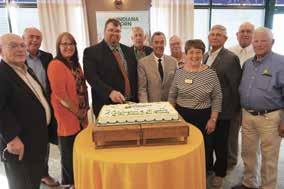
Two current board members were honored for gaining election to national boards. Joshua Miller, a farmer from Anderson, Ind., was elected as USGC Board Chairman on July 27; and J.R. Roesner, who farms in Ferdinand, Ind., became the third Hoosier corn grower elected to the NCGA’s National Corn Board on July 14.
Past ICMC board presidents Dean Eppley, Mike Beard, Mike Shuter and David Gottbrath were recognized during the celebration. Also recognized were past and present state legislators Sen. Beverly Gard (R-Greenfield, Ind.), Sen. Jean Leising (R-Oldenburg, Ind.) and Rep. Don Lehe (R-Brookston, Ind.). Leising served in voluntary Indiana corn organizations prior to the checkoff’s creation.
The lawmakers said the Indiana Corn Market Development Act received overwhelming support in the House but faced some opposition in the agriculture committee in the Senate. Gard, who is retired from the General Assembly, was among the senators who advanced the corn checkoff bill in 2007.
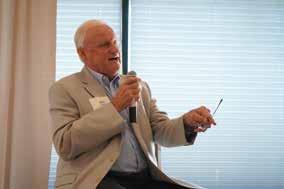
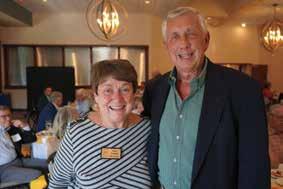
“We were seeing some resistance to the bill in the agriculture committee,” Gard said. “I think there were members who were skeptical of the potential benefits of the program. So, I decided that this bill was more of an economic development bill than an agriculture bill. We moved it to that committee, and we were able to get it passed in the Senate.”
Just this summer, the corn checkoff program has developed programs to encourage global trade, to expand the ethanol industry and to inform farmers and first responders regarding the dangers of agriculture through grain bin safety meetings. Through projects like these, Kingery said, the checkoff seeks to improve the lives and economies of Indiana corn growers.
“As CEO of the corn checkoff, I know that, as a board and staff, we are working hard to help lives and incomes of the farmers we serve,” Kingery said. “One way we gauge our success is through the rate of checkoff refunds that we pay back to farmers each year. In 2008, as we began to serve Indiana’s corn growers, our refund rate was 21 percent of the paid checkoff. Today, our refund rate has dropped to just 4 percent. This is a fair picture of our growth as an organization and the confidence that corn farmers have in ICMC to serve their needs. Behind these numbers, there is a
farmers every day.”
For details about Indiana’s corn checkoff program, visit www.incorn.org

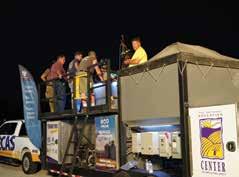 BY DAVE BLOWER JR.
BY DAVE BLOWER JR.
The Indiana Corn Marketing Council (ICMC) partnered with insurance provider Nationwide through its Grain Bin Safety campaign to donate grain bin rescue tubes and training to five rural volunteer fire departments in September.

The first responders receiving the equipment and training include the Hamlet-Davis Fire Territory of Hamlet, Ind.; the Ashley Fire Department of DeKalb and Steuben counties; the Westport Community Volunteer Fire Department of Decatur County, Ind.; the Huntingburg Fire Department of Dubois County, Ind.; and the Ripley Township Volunteer Fire Department of Alamo, Ind.
According to a May 2021 report by Purdue University, 64 U.S. farmers were involved in farm accidents in confined spaces during 2020. That is a 4.5 percent decrease from 2019. Of those accidents, 32 were fatal grain bin entrapments. Three of those accidents involved more than one victim, and three were women. Illinois reported the most accidents with 17 in 2020.
Richard J. Minker, the president and instructor with the Hamlet-Davis Fire Territory, applied for the grant that provided the grain rescue tubes and specialized training.
“Our county had one years ago, but we didn’t get any training,” Minker said. “We really appreciate the training that has come with this rescue equipment. There’s a need for this in our area. This is a rural area with many farmers. In fact, six or seven volunteers on our department are farmers or work on a farm.”
He said his department had a successful rescue from a concrete grain bin in 2020.
Dan Neenan, a paramedic and director of the National Education Center for Agricultural Safety in Peosta, Iowa, led the training along with instructor Brian Freese. Neenan and Freese travel the country training first responders on the proper use of the rescue tubes. He said successful rescues of victims trapped in grain bins are complicated and time consuming.
“The average time of rescue, after the fire department arrives on the scene, is 3 1/2 hours. So, you’re in for a long extraction,” Neenan said. “When the auger is on, a person can be pulled waist deep into the grain within 15 seconds. Most people will be able to pull themselves out if they only go knee-deep; but once it gets up to the mid-thigh area, they’re going to need help.”
Nationwide’s program donated 58 rescue tubes in 2022 and 265 since the program began in 2014. So far, these tubes have been used to successfully rescue five farm workers. Neenan told the Hamlet firefighters that the equipment provided by ICMC and Nationwide was “top of the line and expensive.”
“ICMC is happy to partner with Nationwide to donate this life-saving equipment and training to first responders,” ICMC President Paul Hodgen, a farmer from Roachdale, Ind., told the firefighters during the training in Alamo, Ind. “Rural fire departments are often the first to respond to these emergencies, and that is why ICMC and Nationwide is working with these first responders to help them prepare to save lives. Thank you for what you do for our communities and for being here to take this training.”
To learn more or view grain bin safety resources, visit www.thinkgrainbinsafety.com
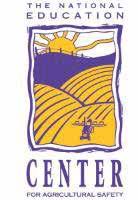
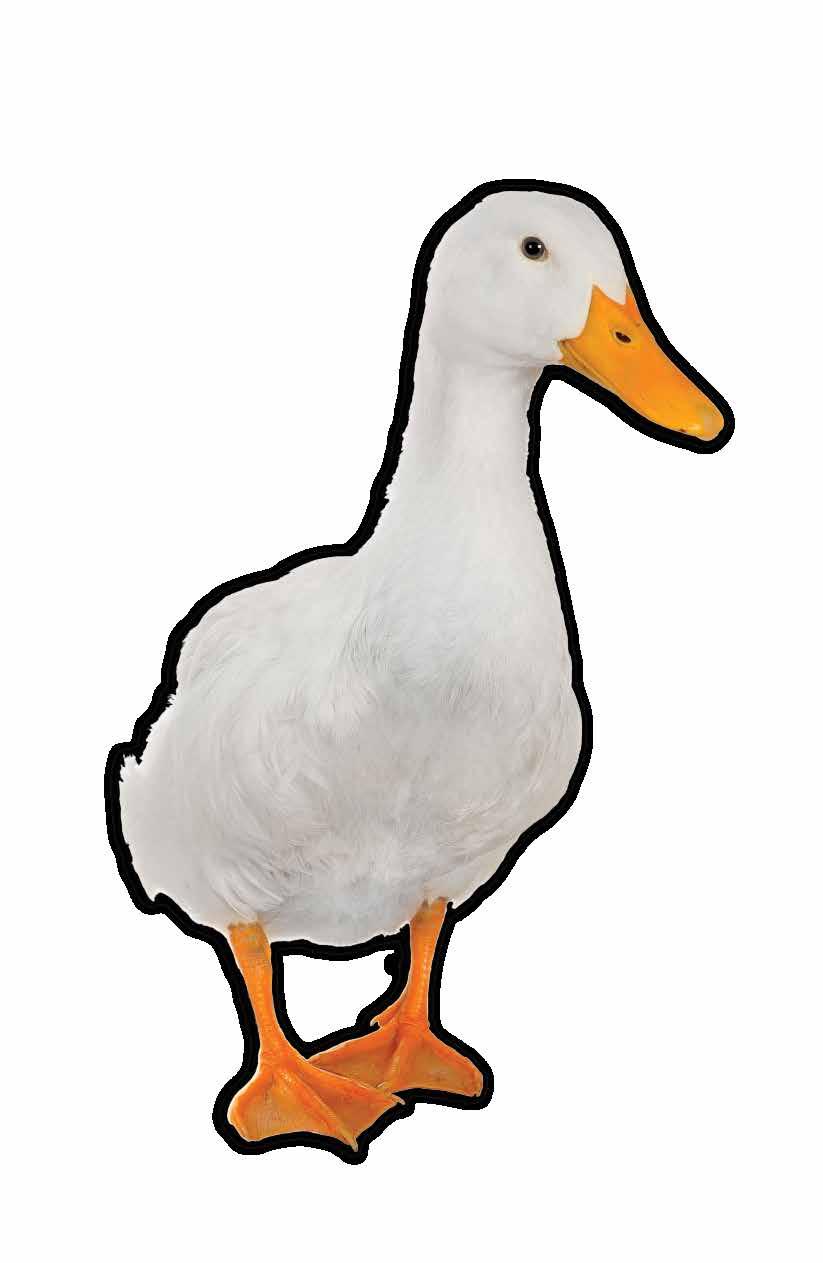



Increasing domestic livestock production and growing global protein demand are vital to Indiana's soybean growth. By working with our international partner, USA Poultry and Egg Export Council, Indiana's poultry and egg exports translated into 3.7 million soybean bushels in 2020, of which approximately 39.0 percent were turkey meat exports, 41.9 percent were for chicken and duck meat exports, and 19.2 percent were for egg exports.
See how protein markets are driving soybean value at Indianasoybean.com.
